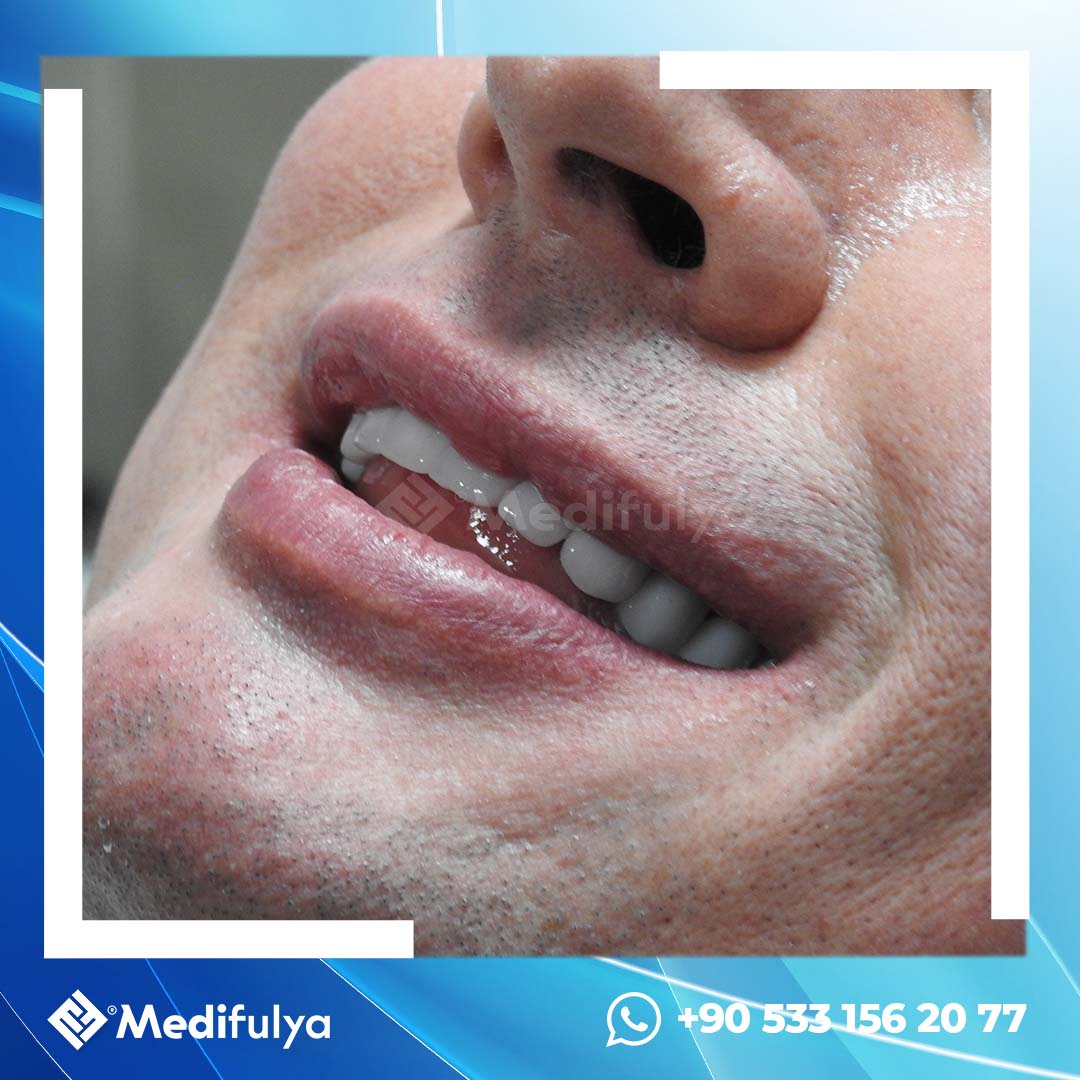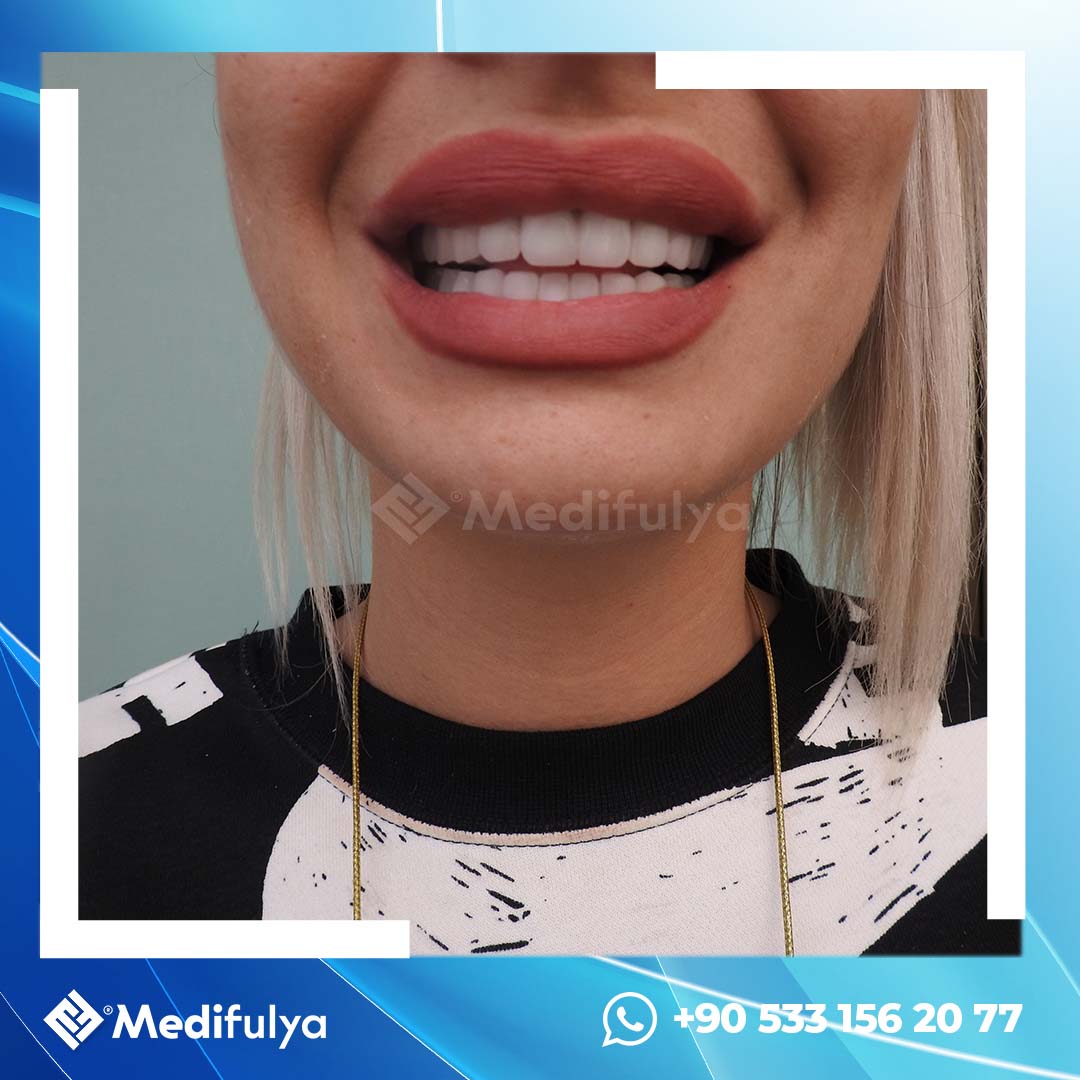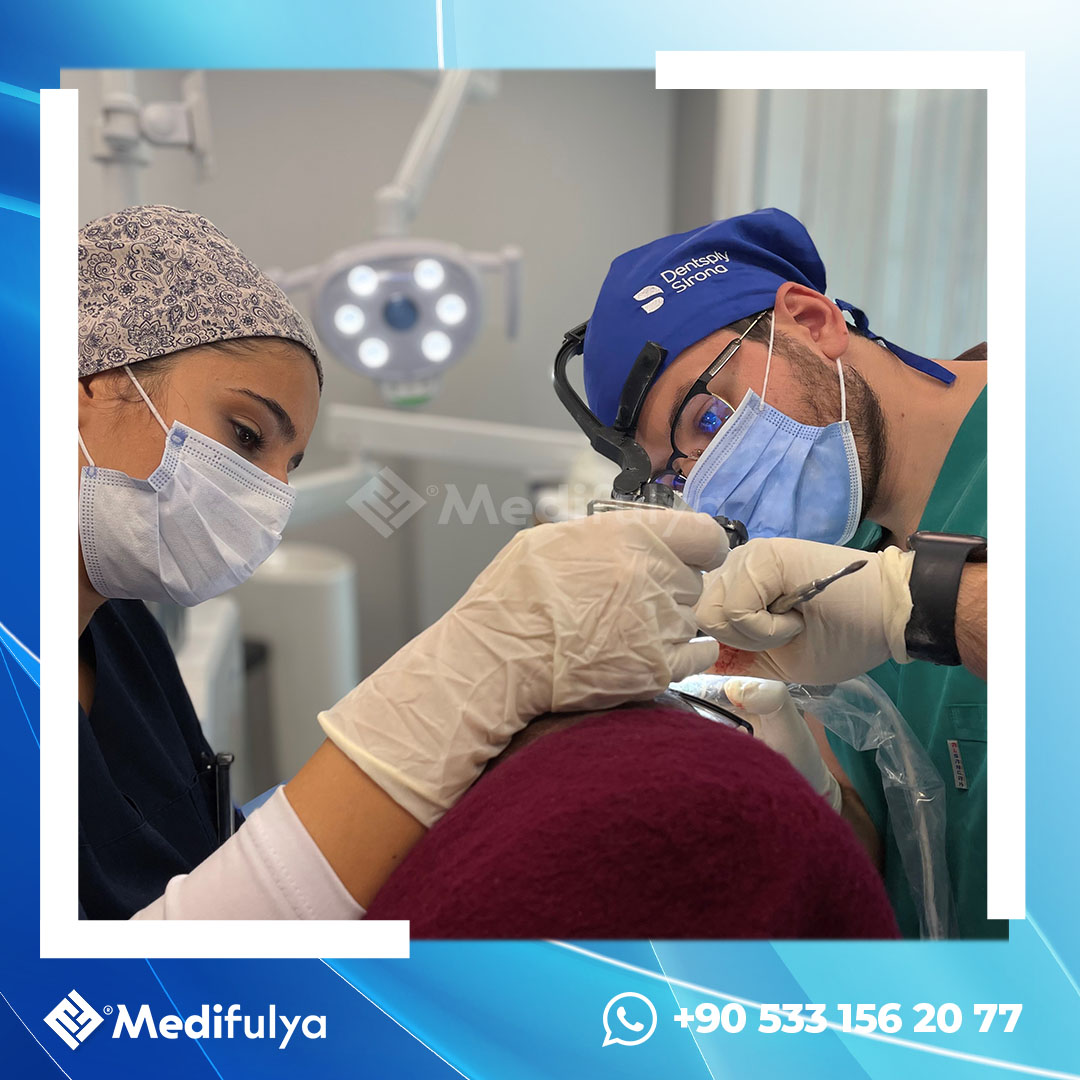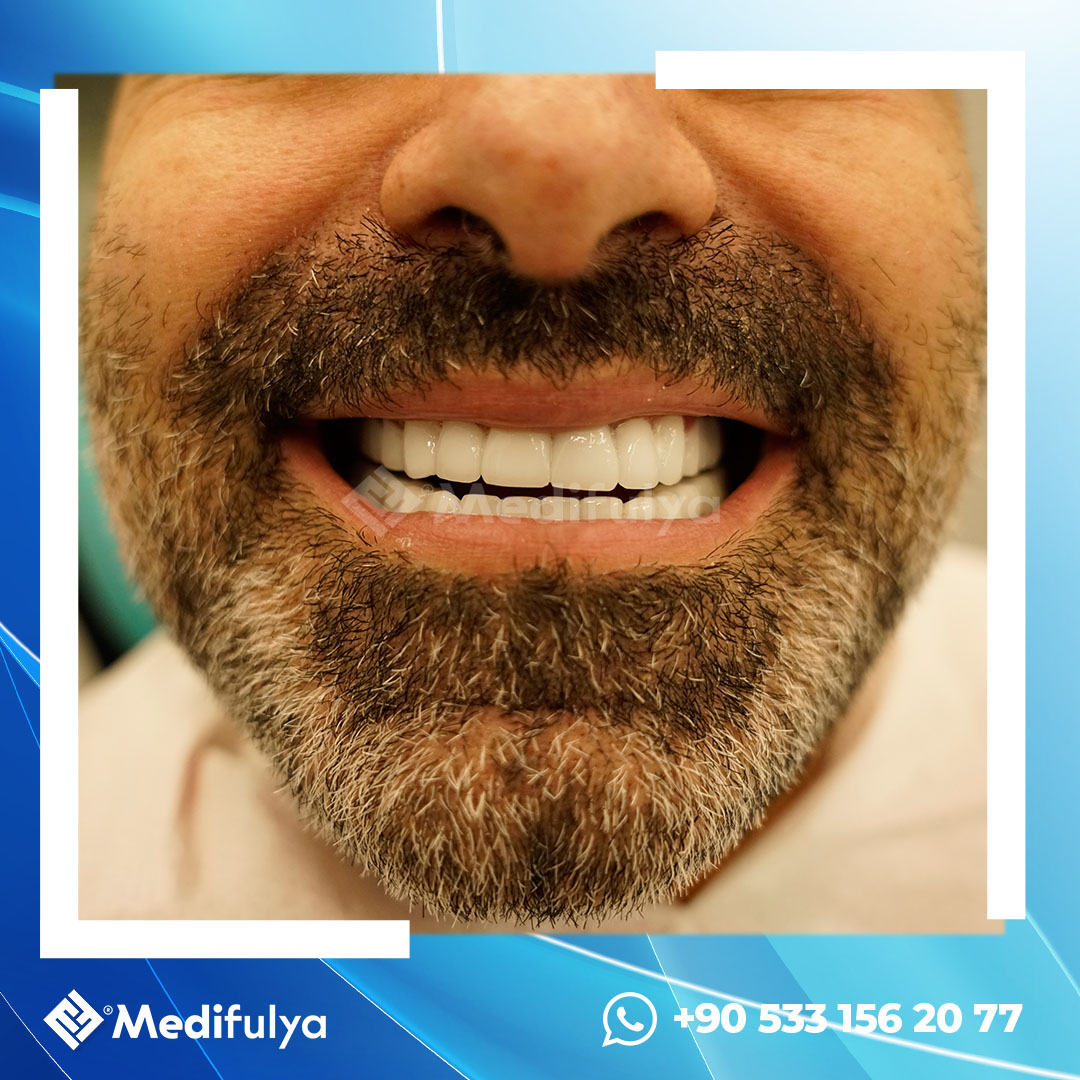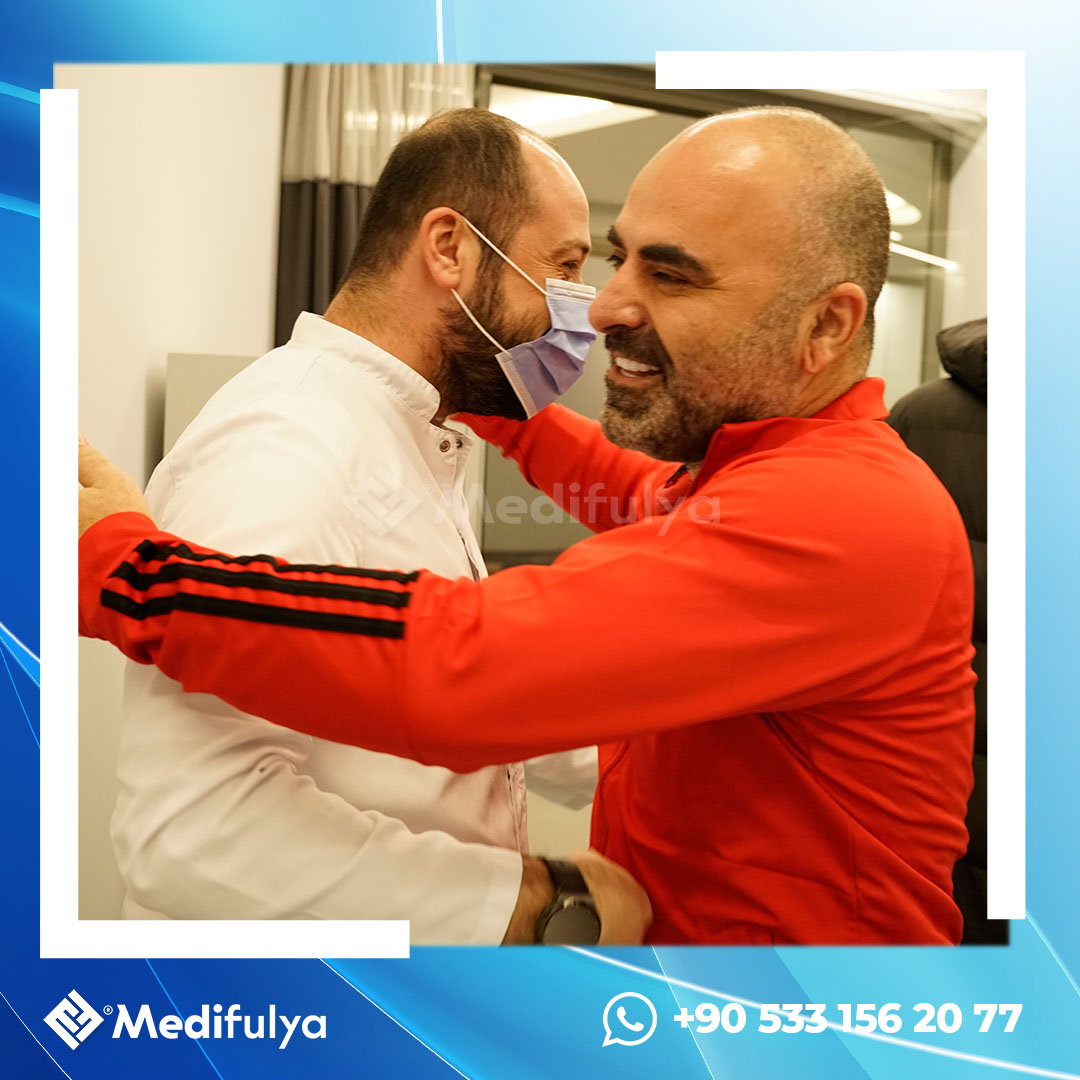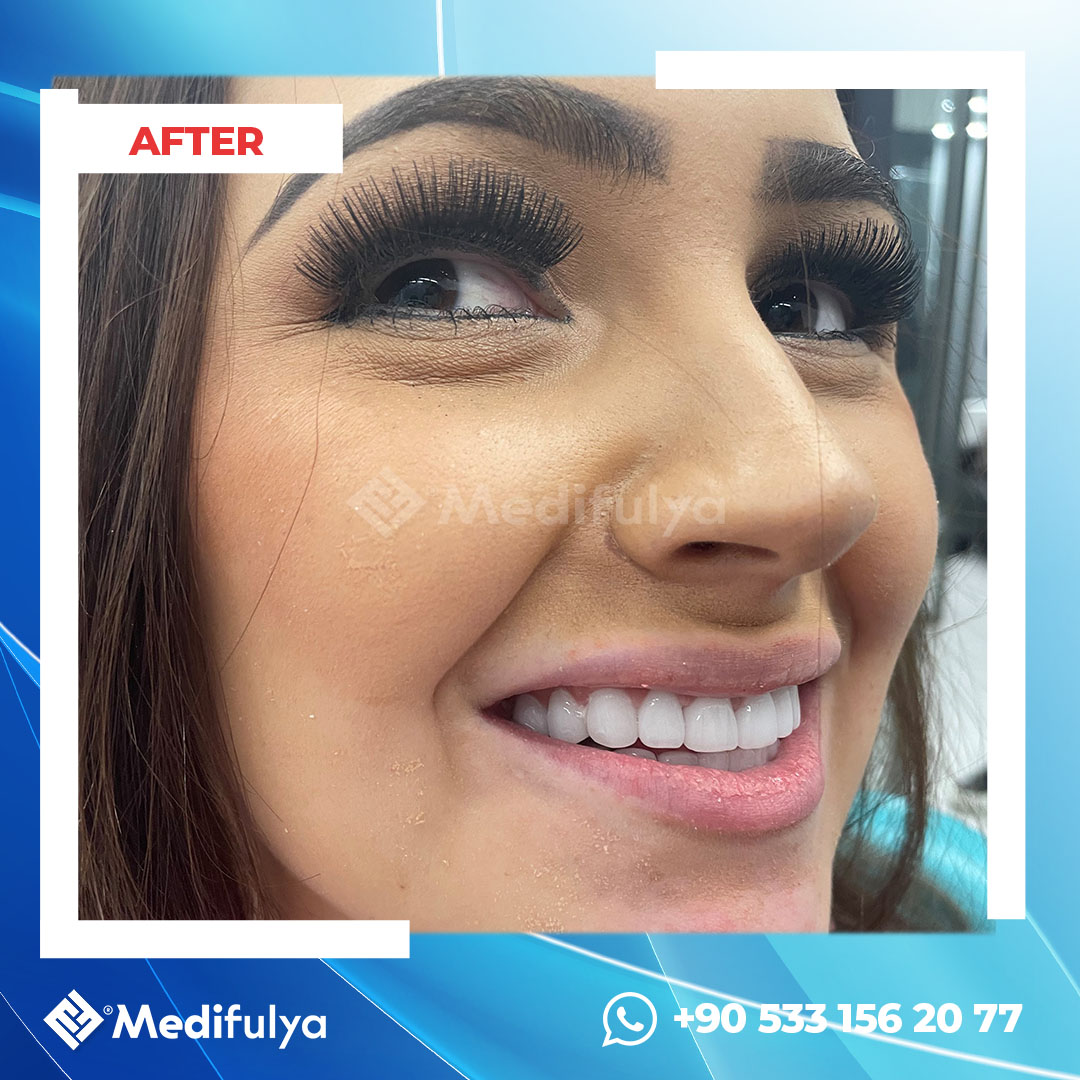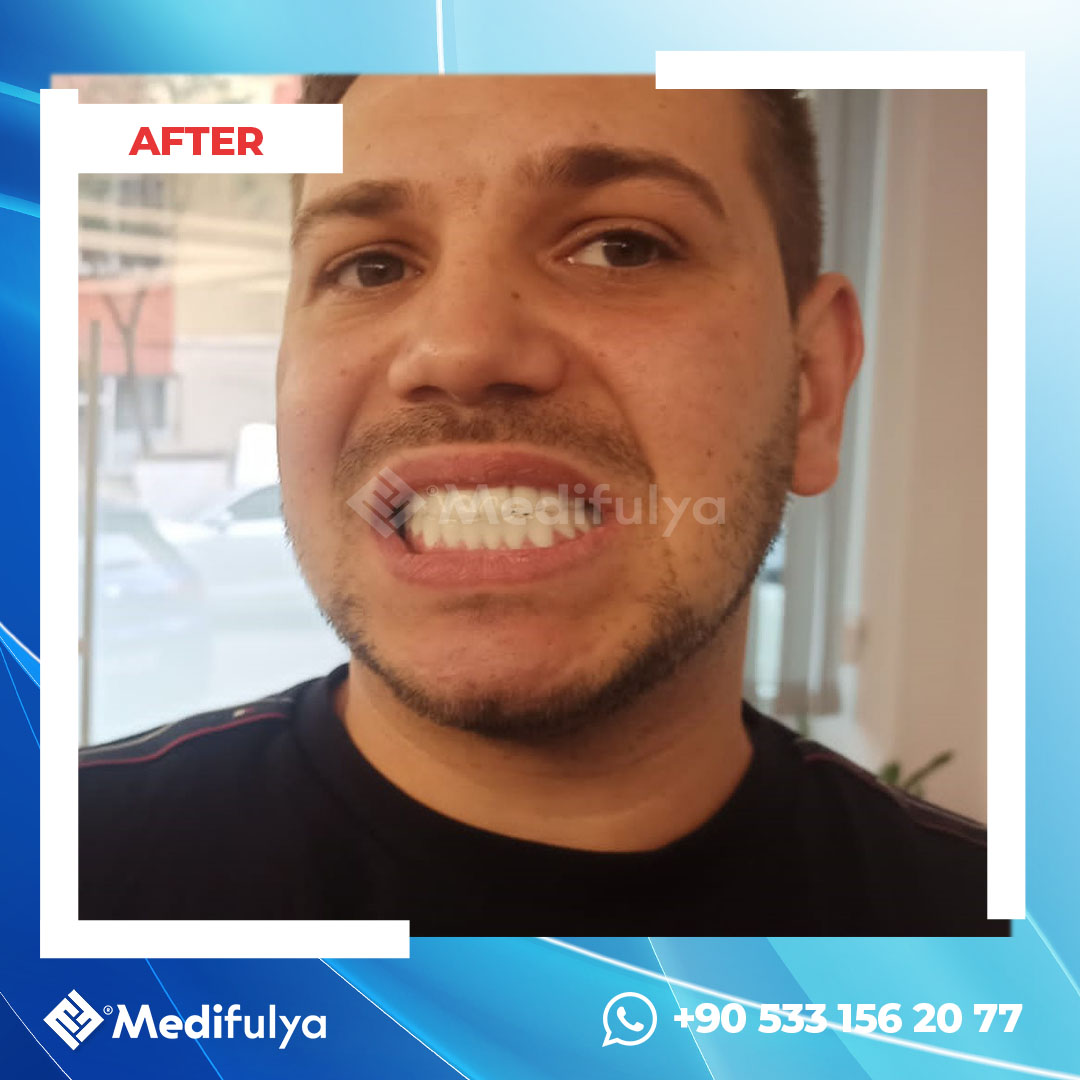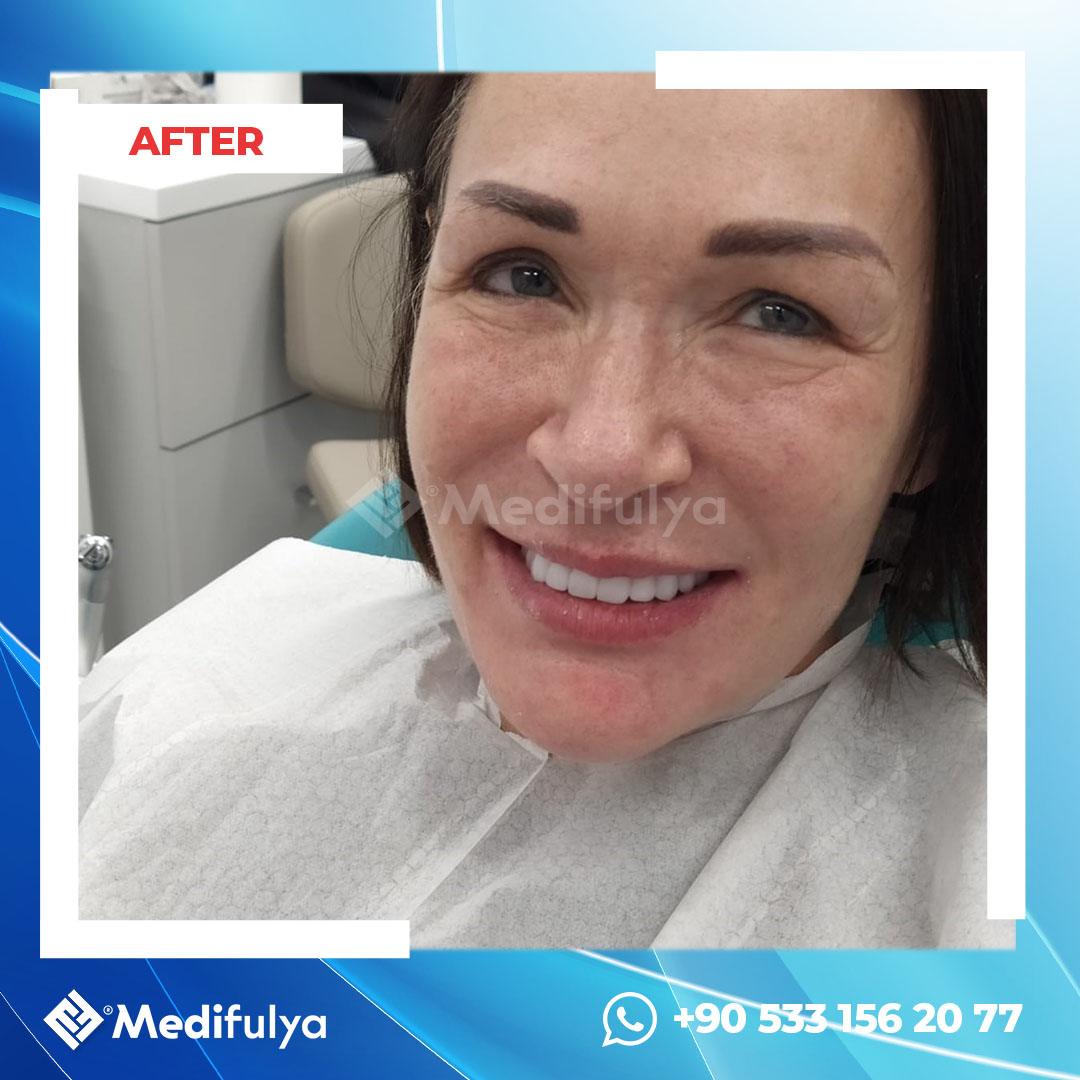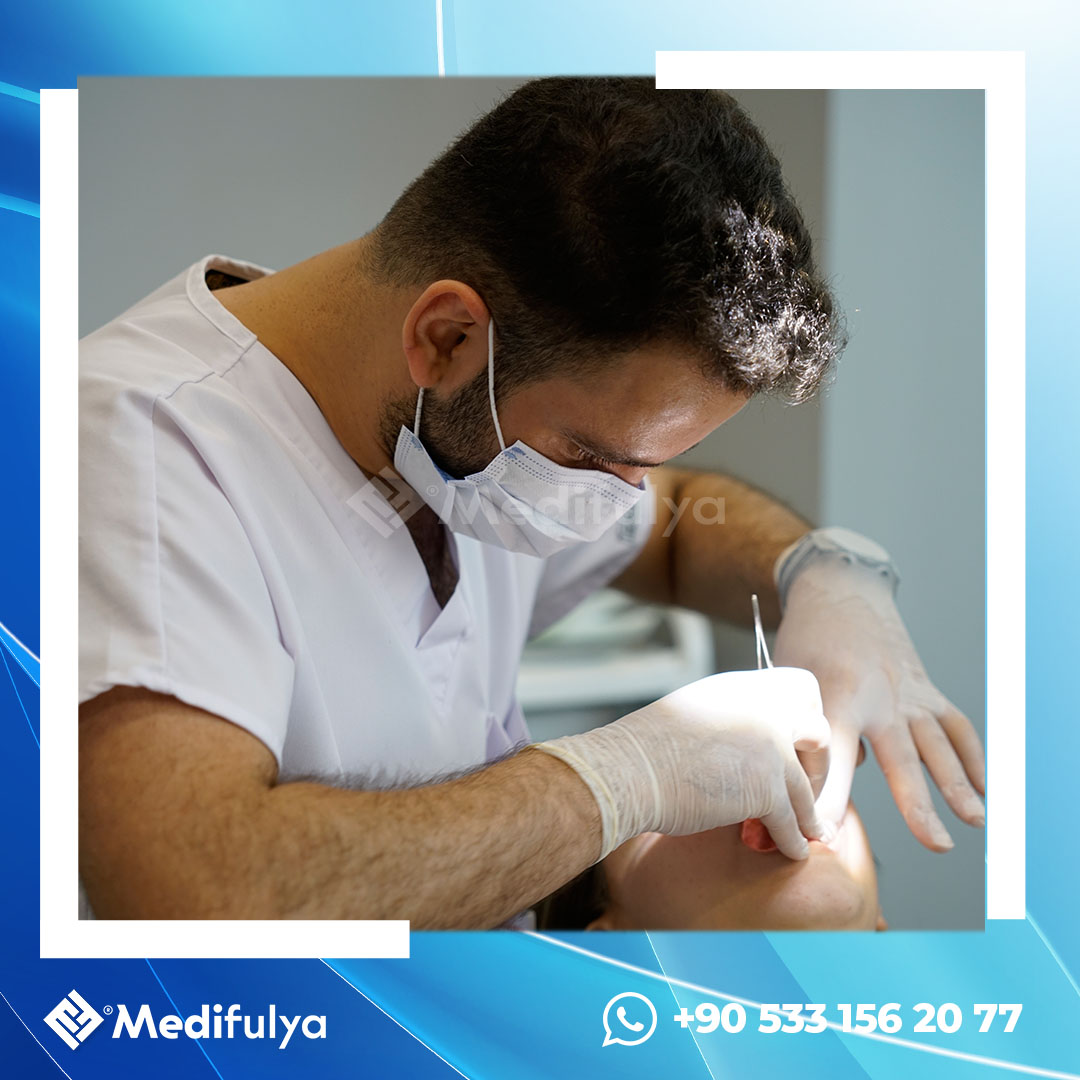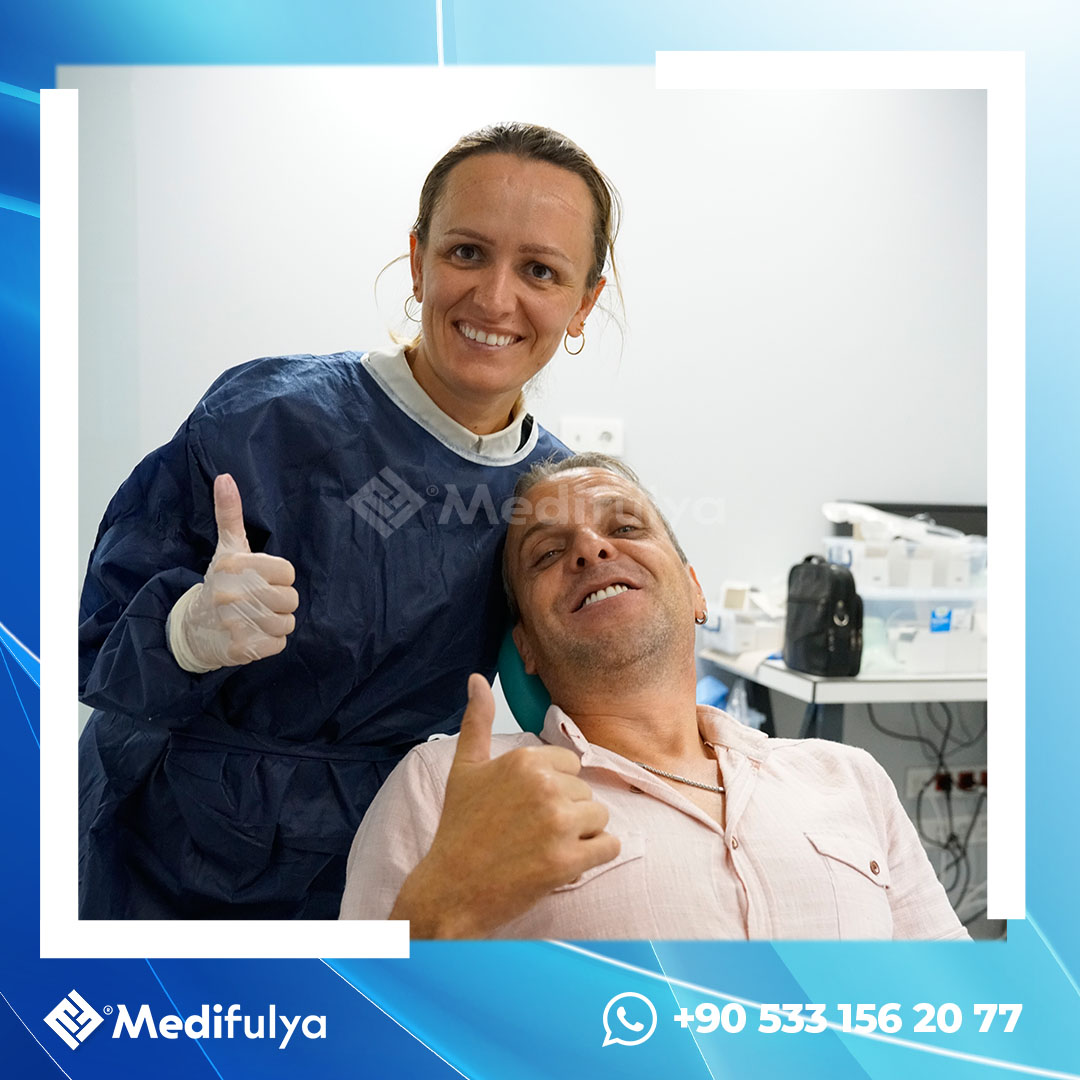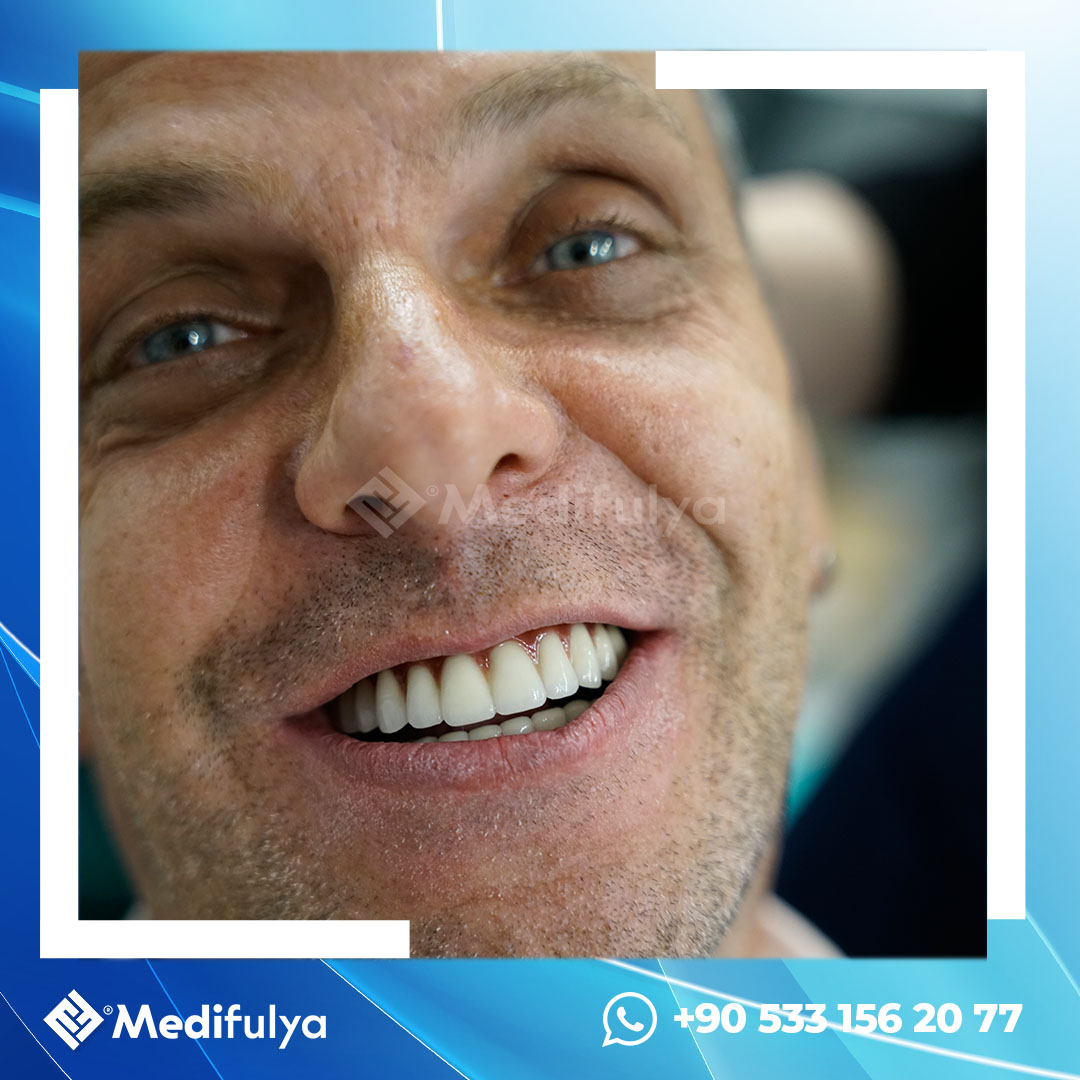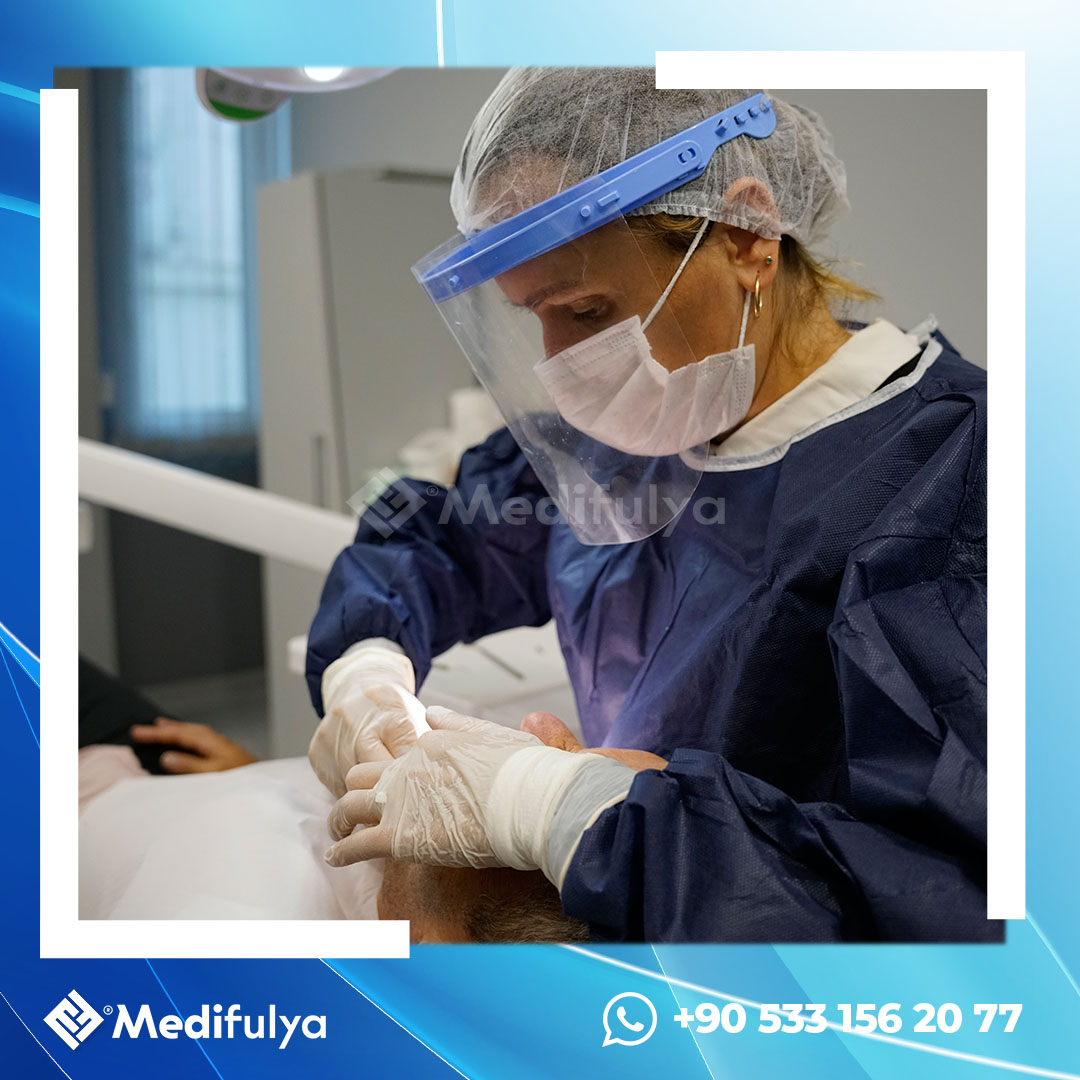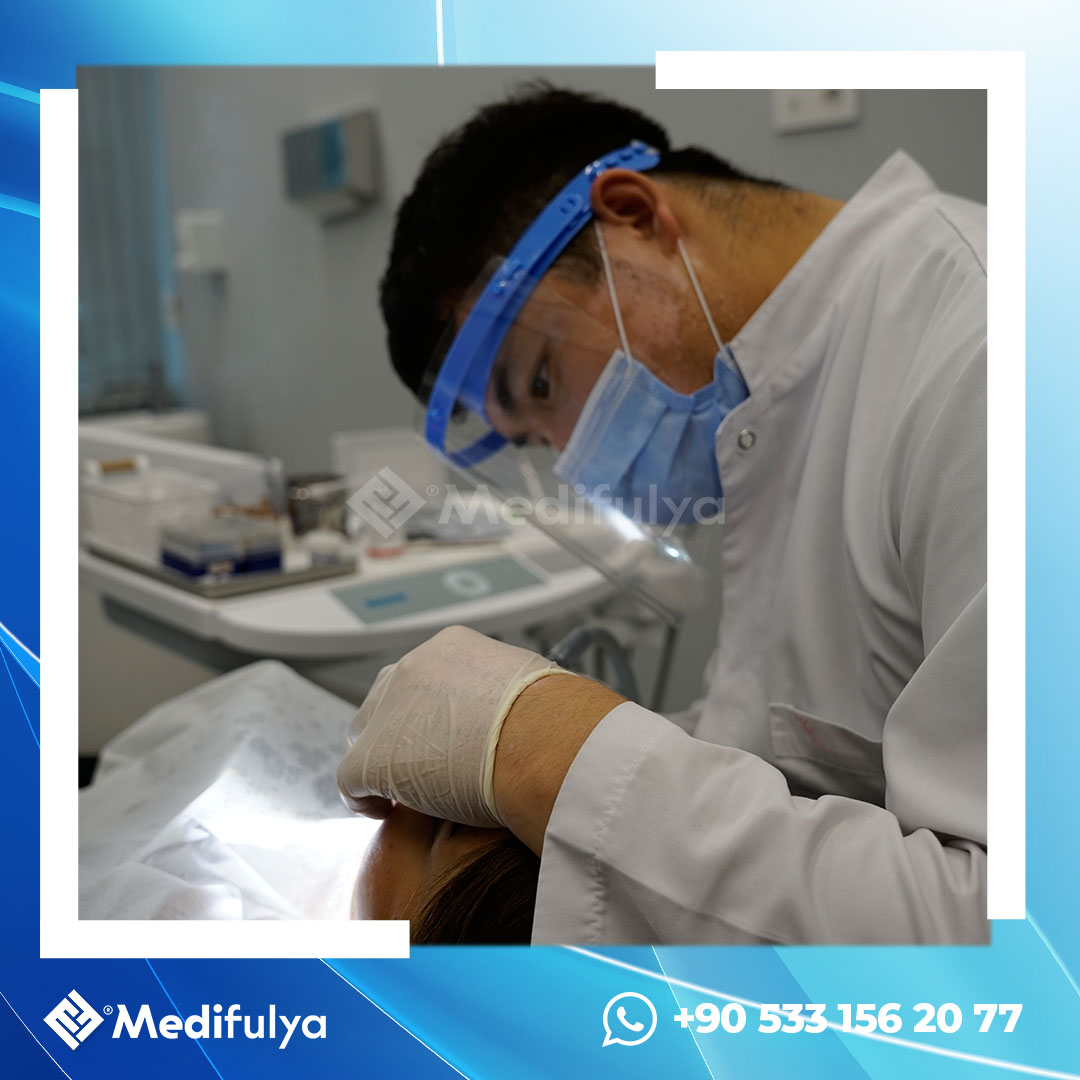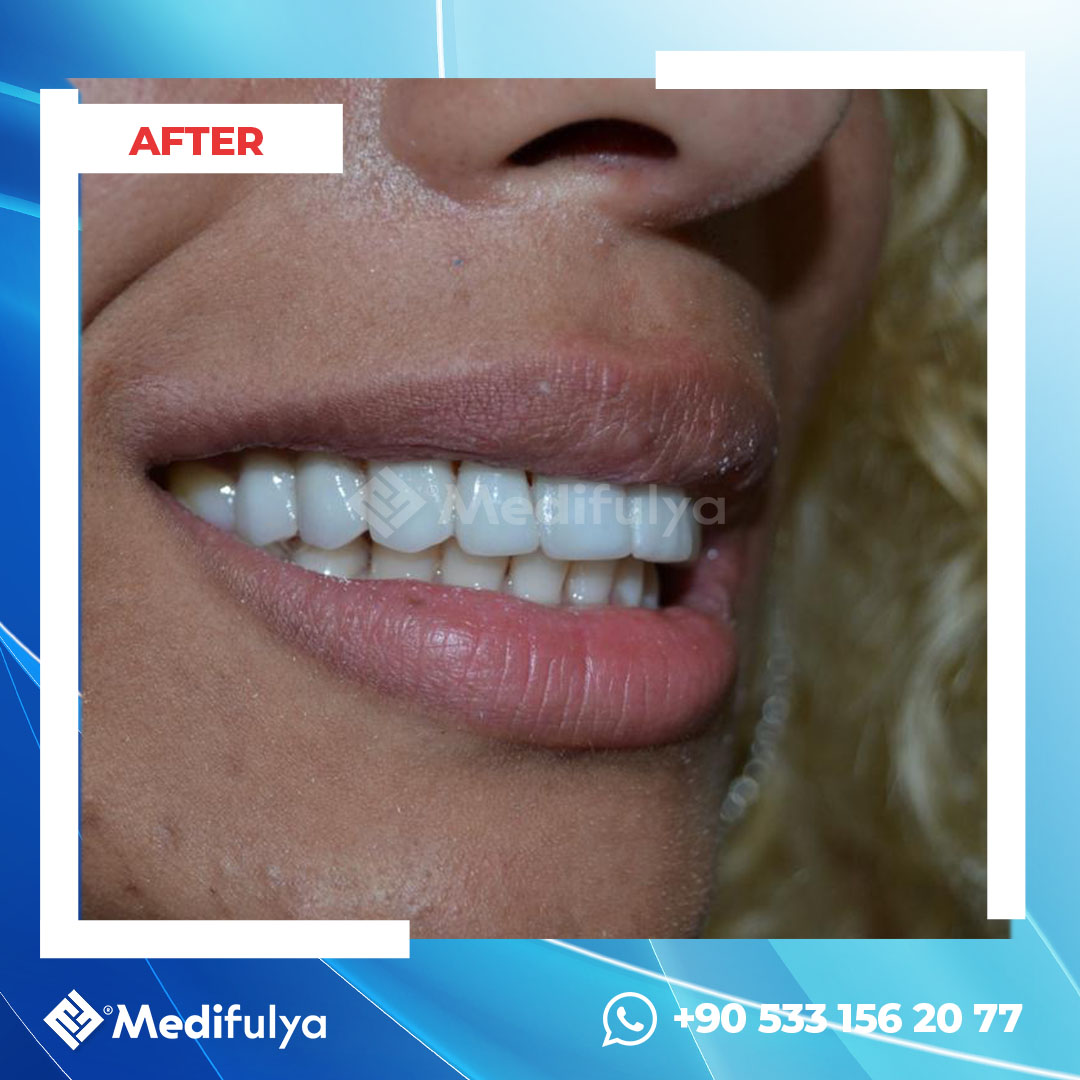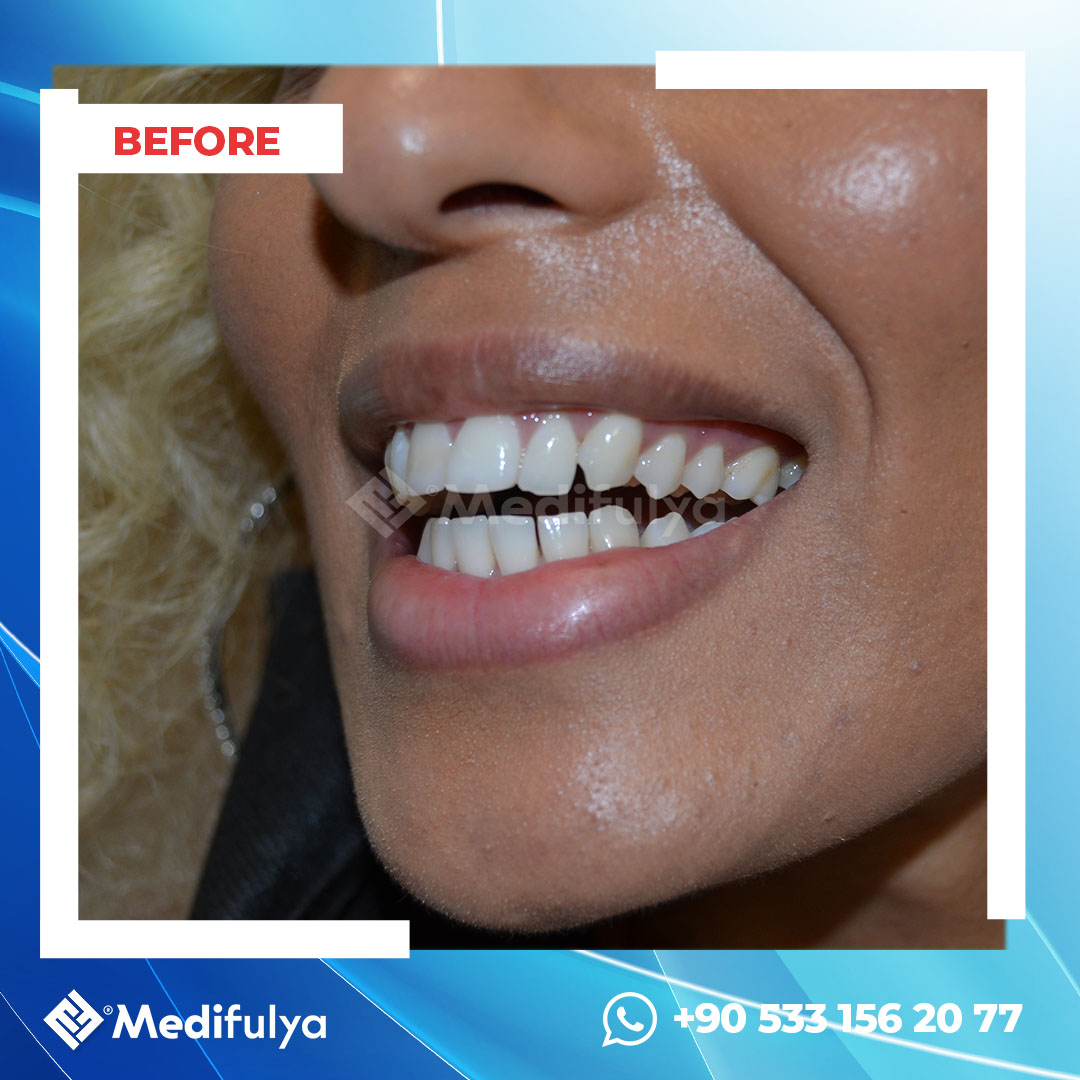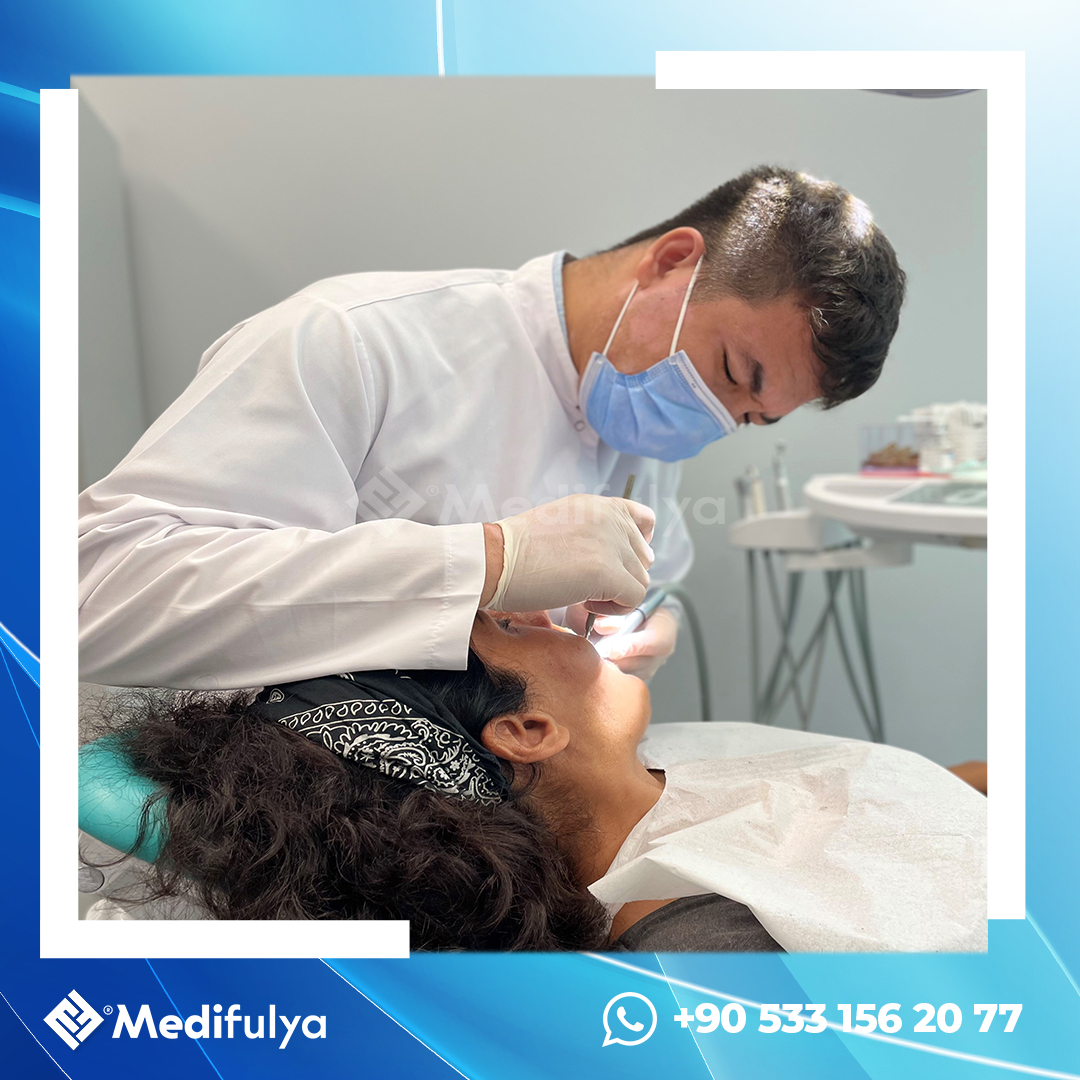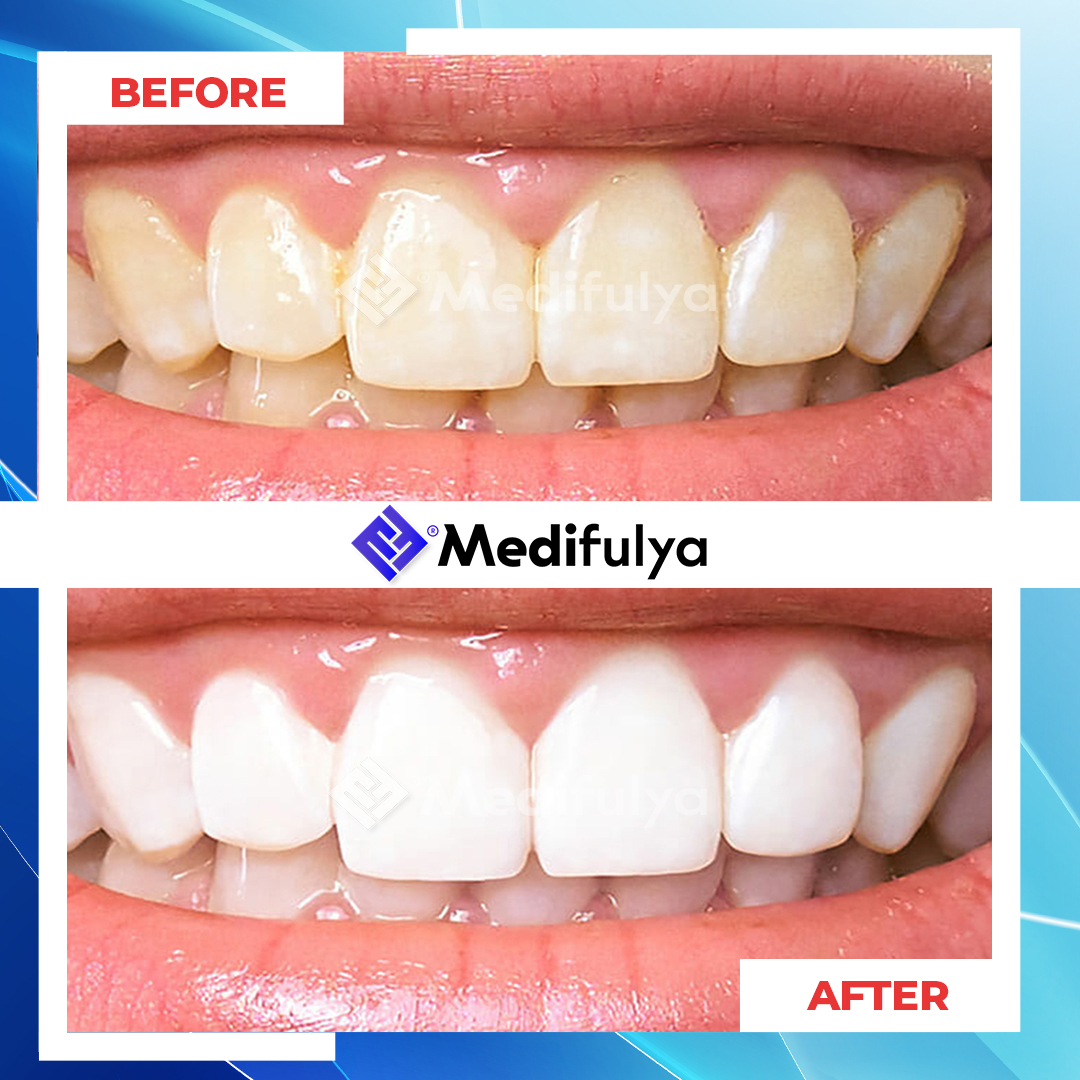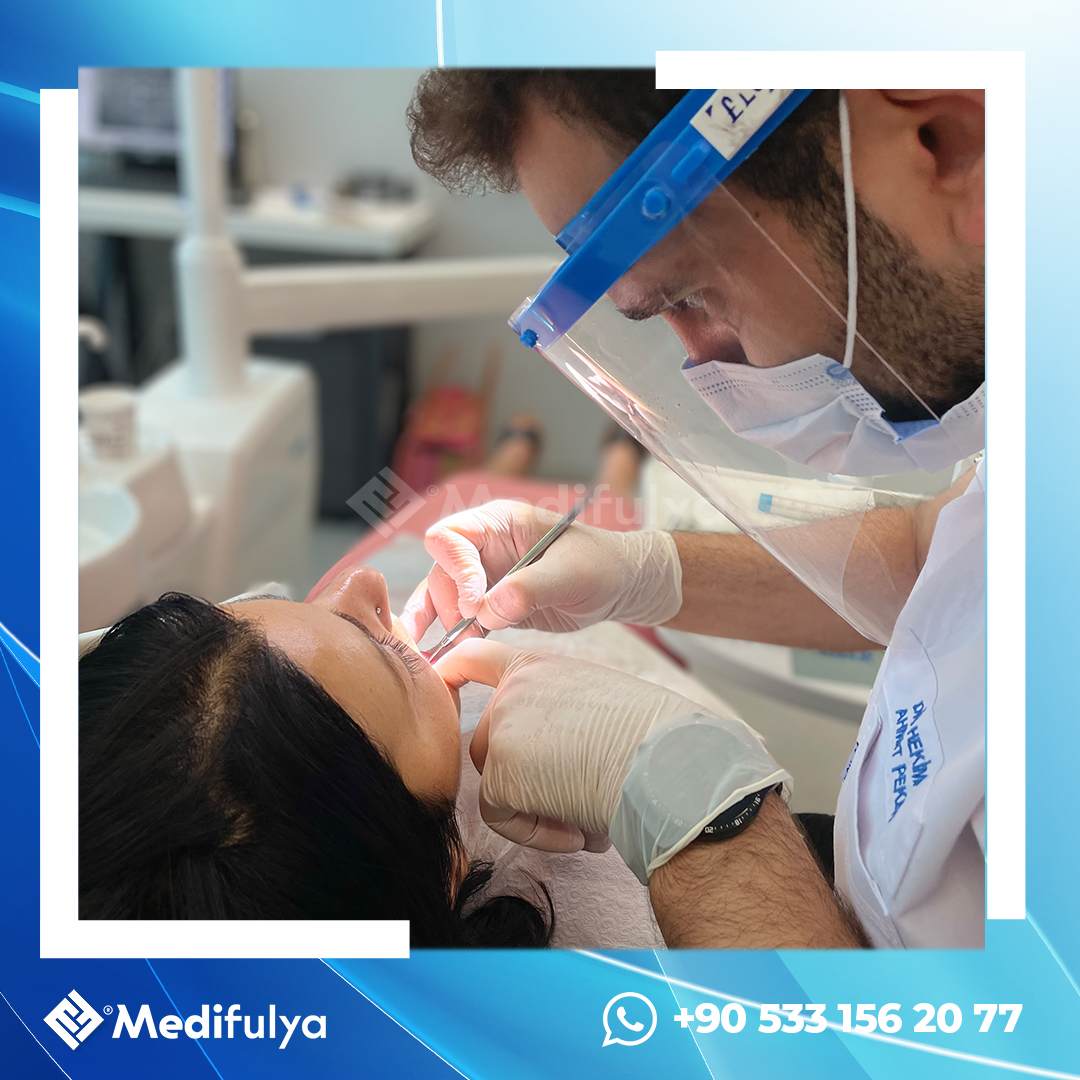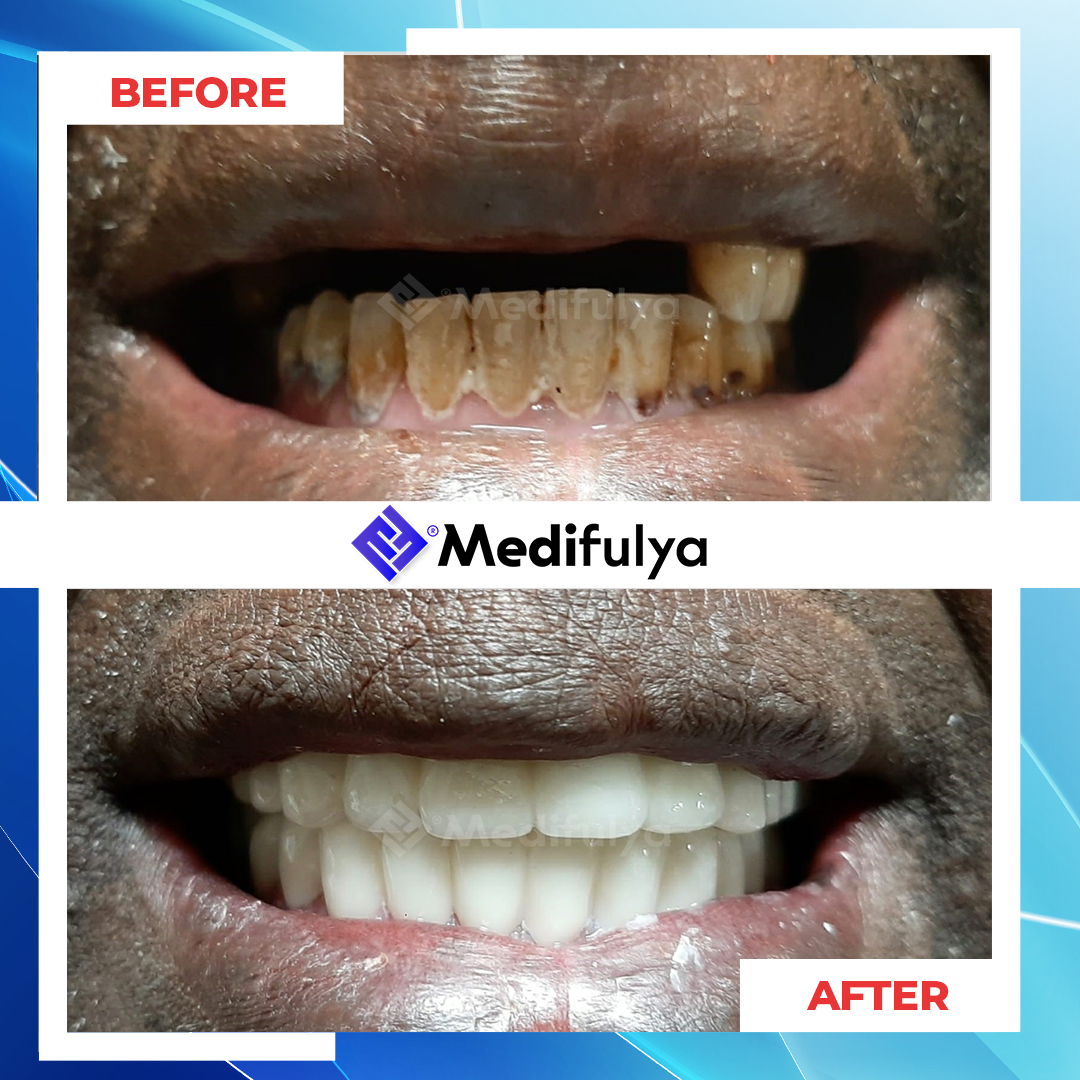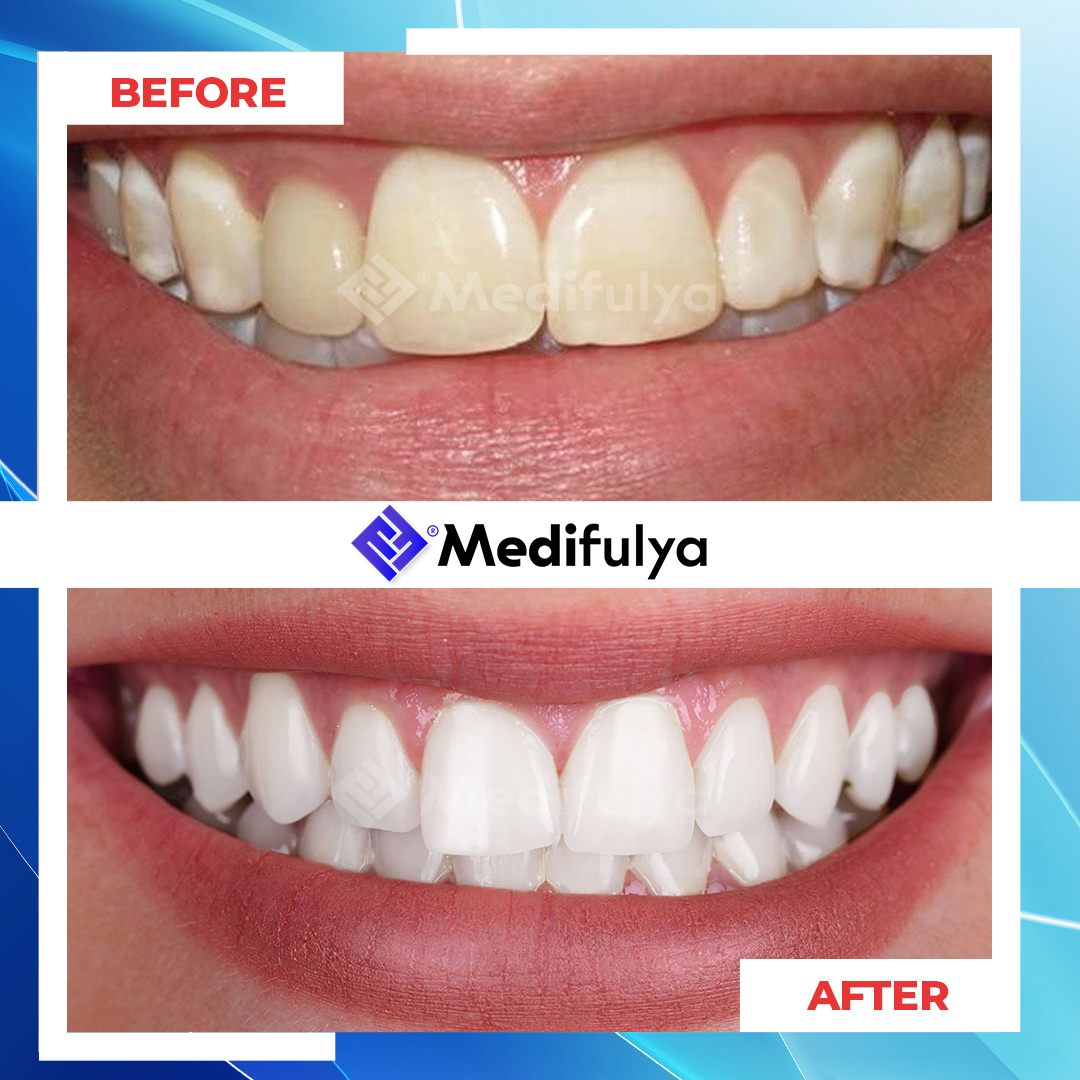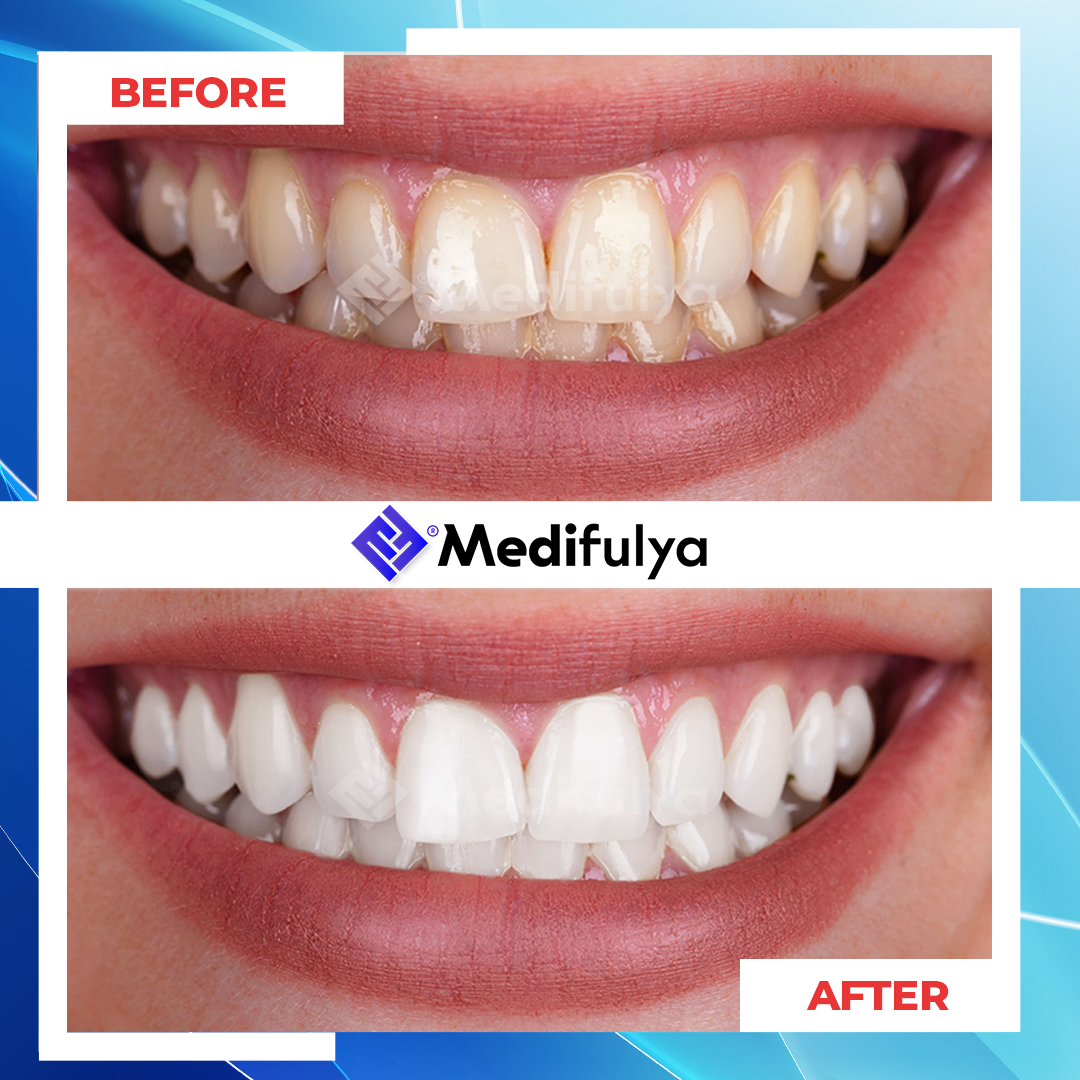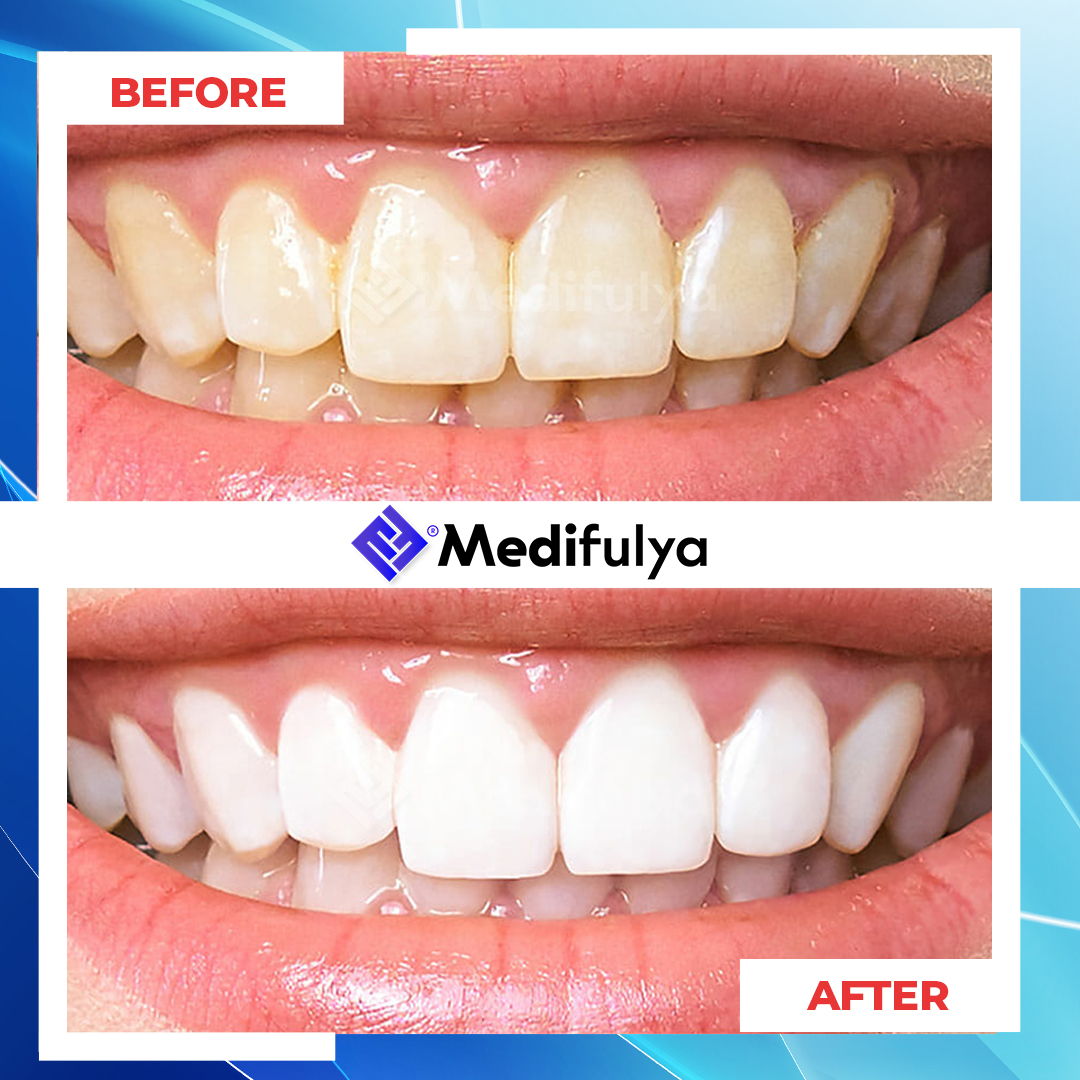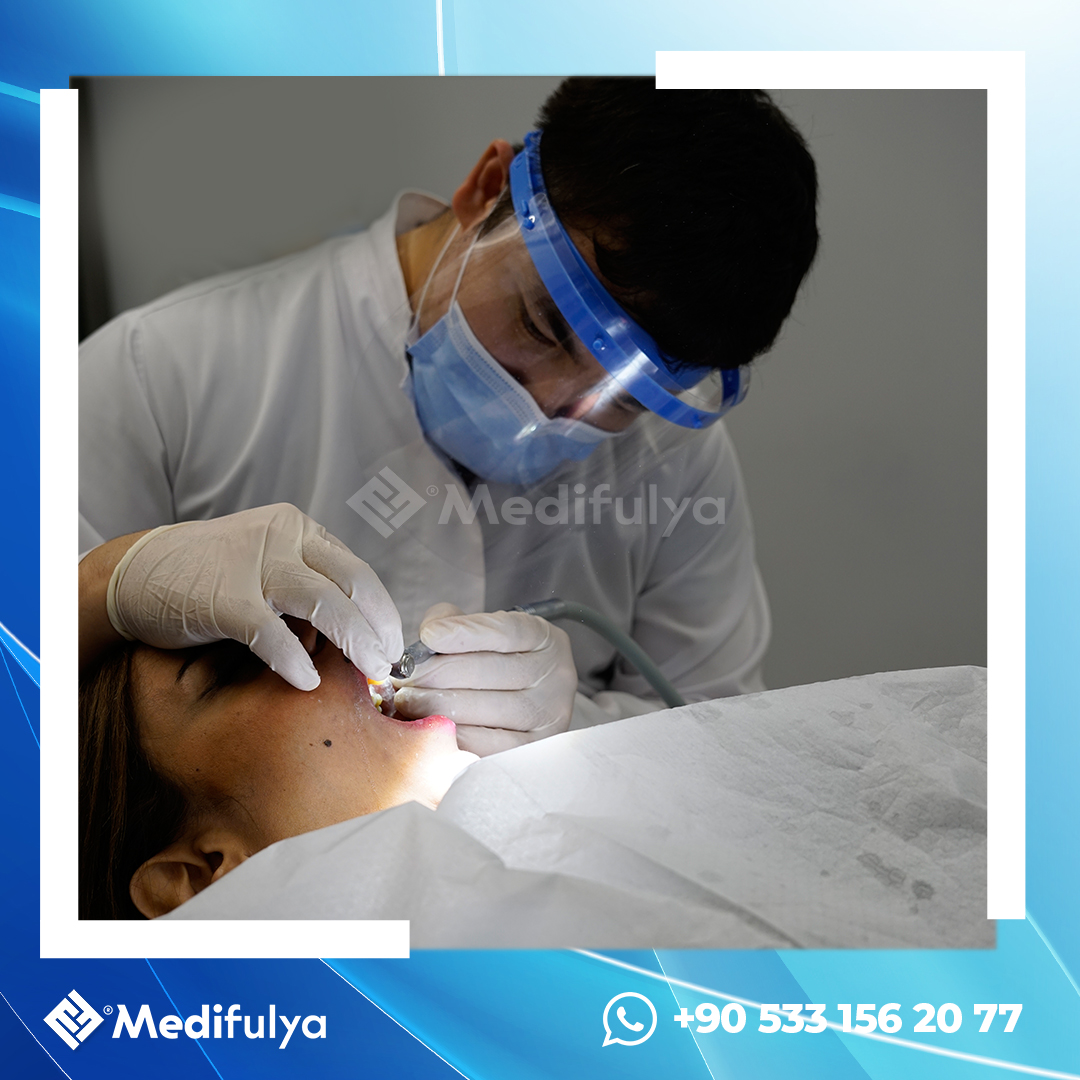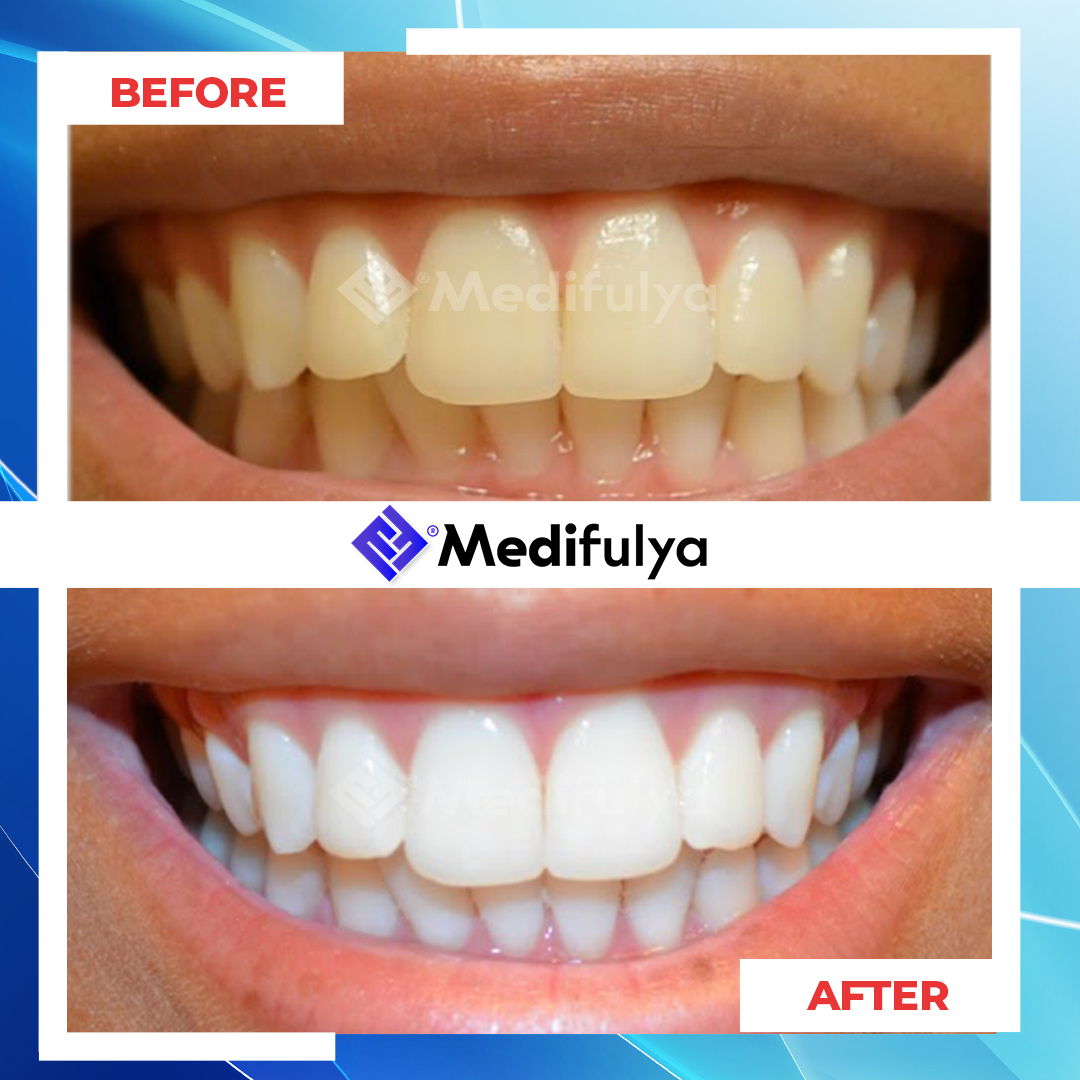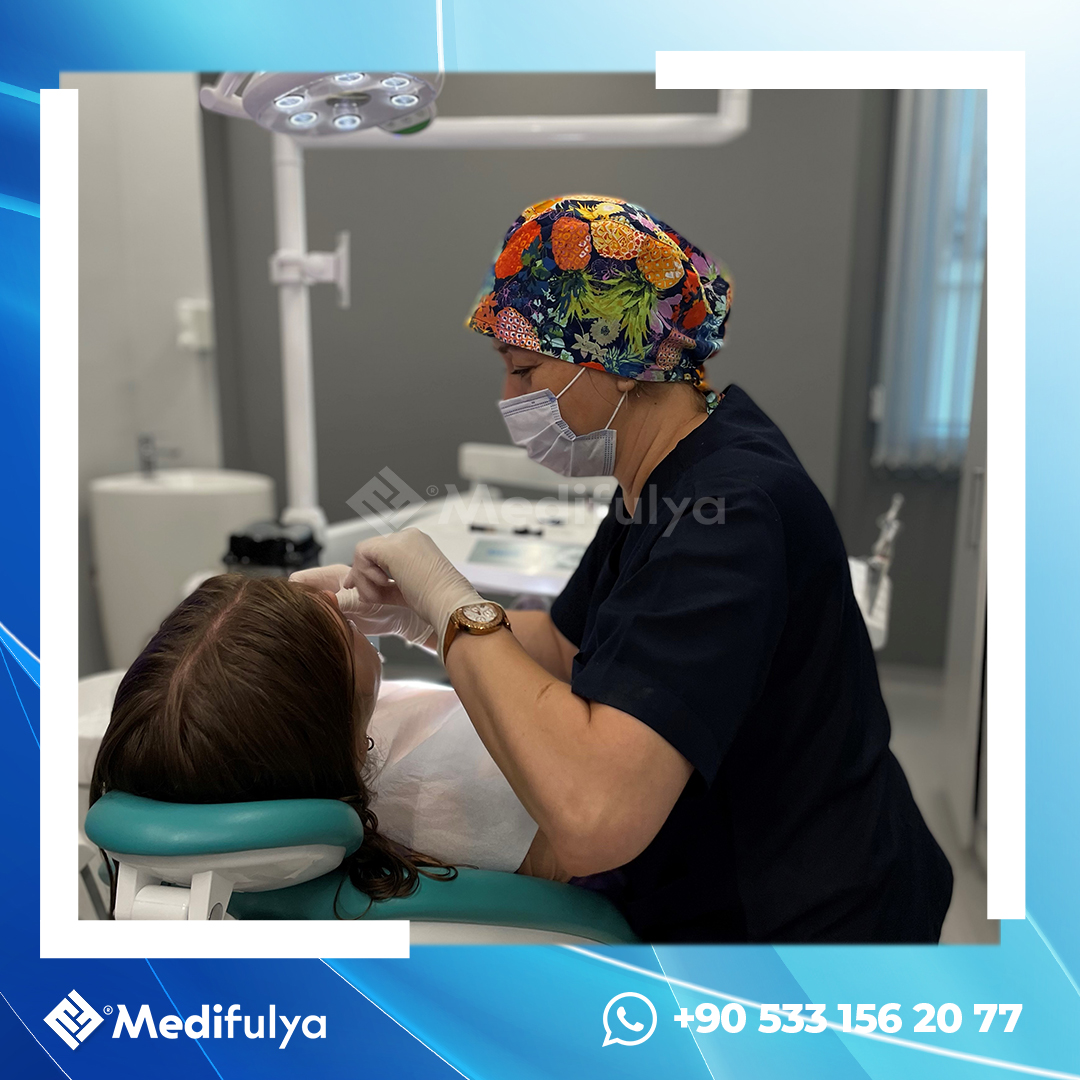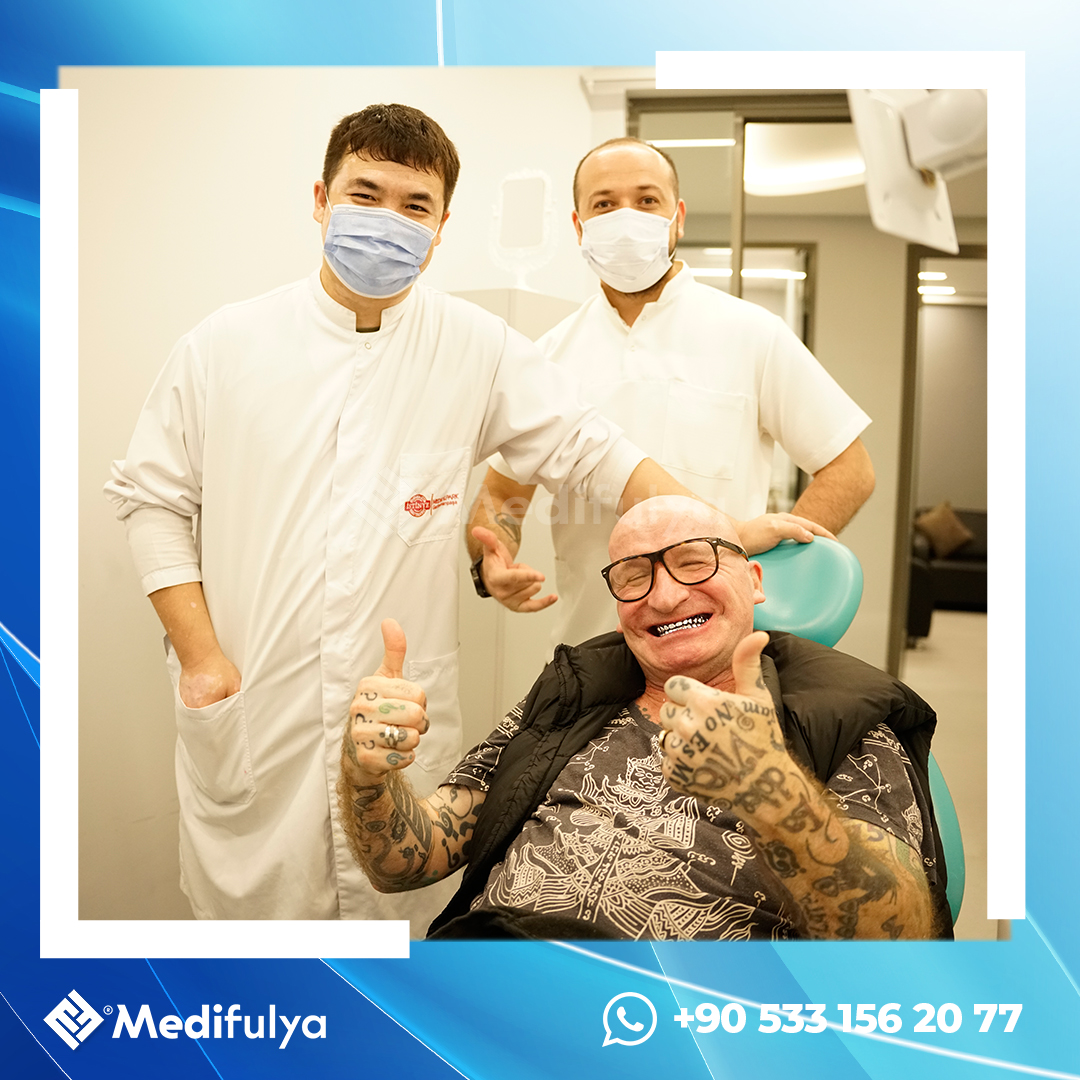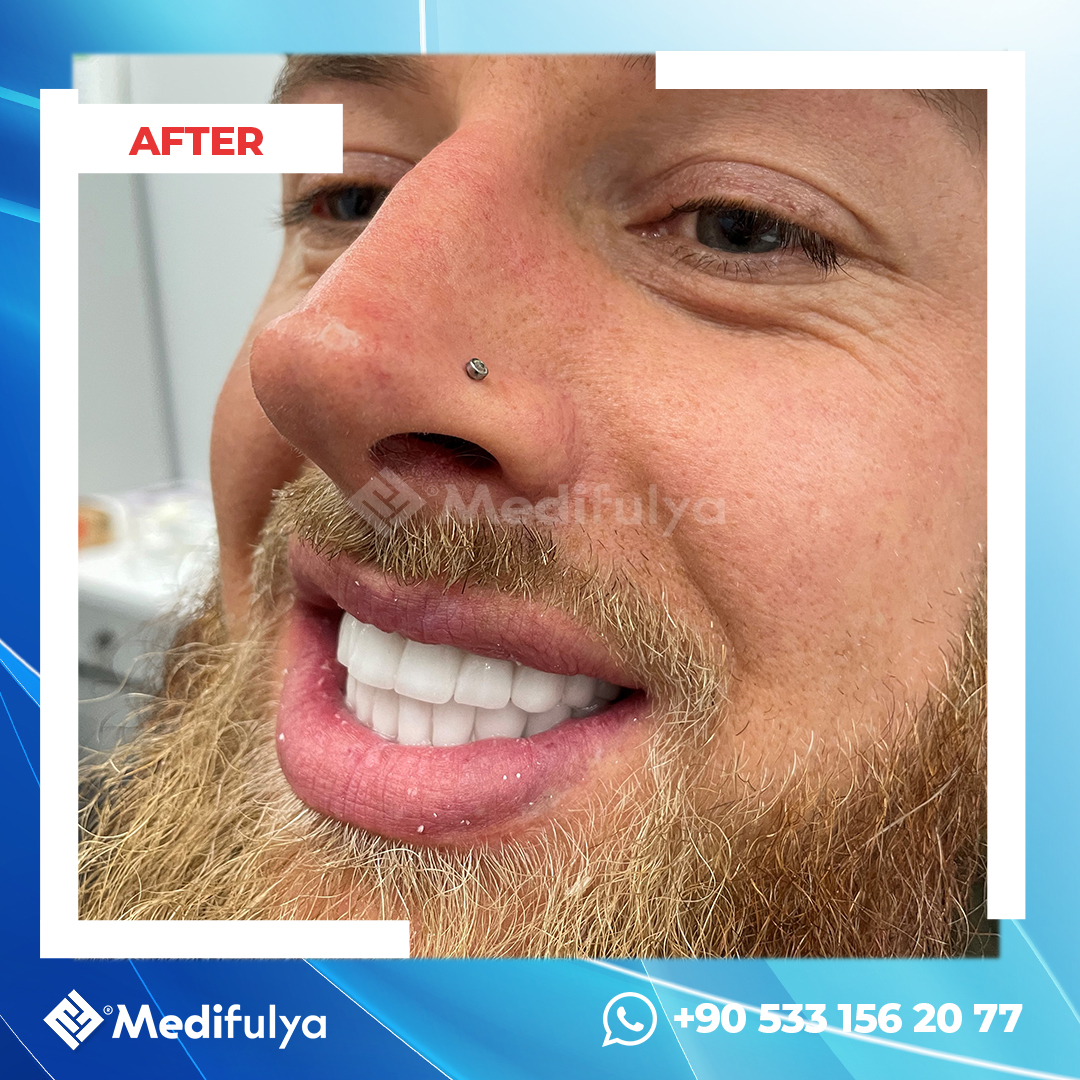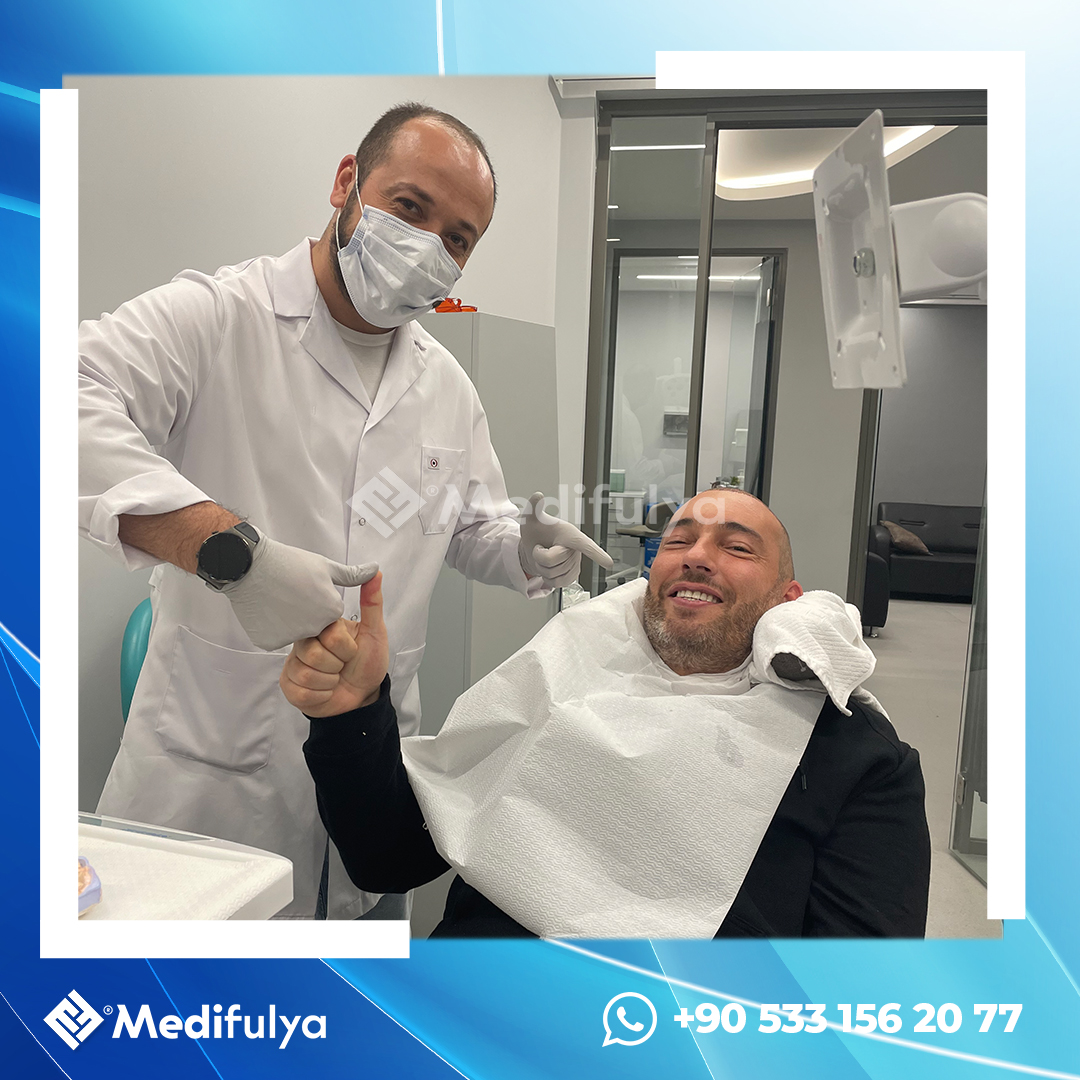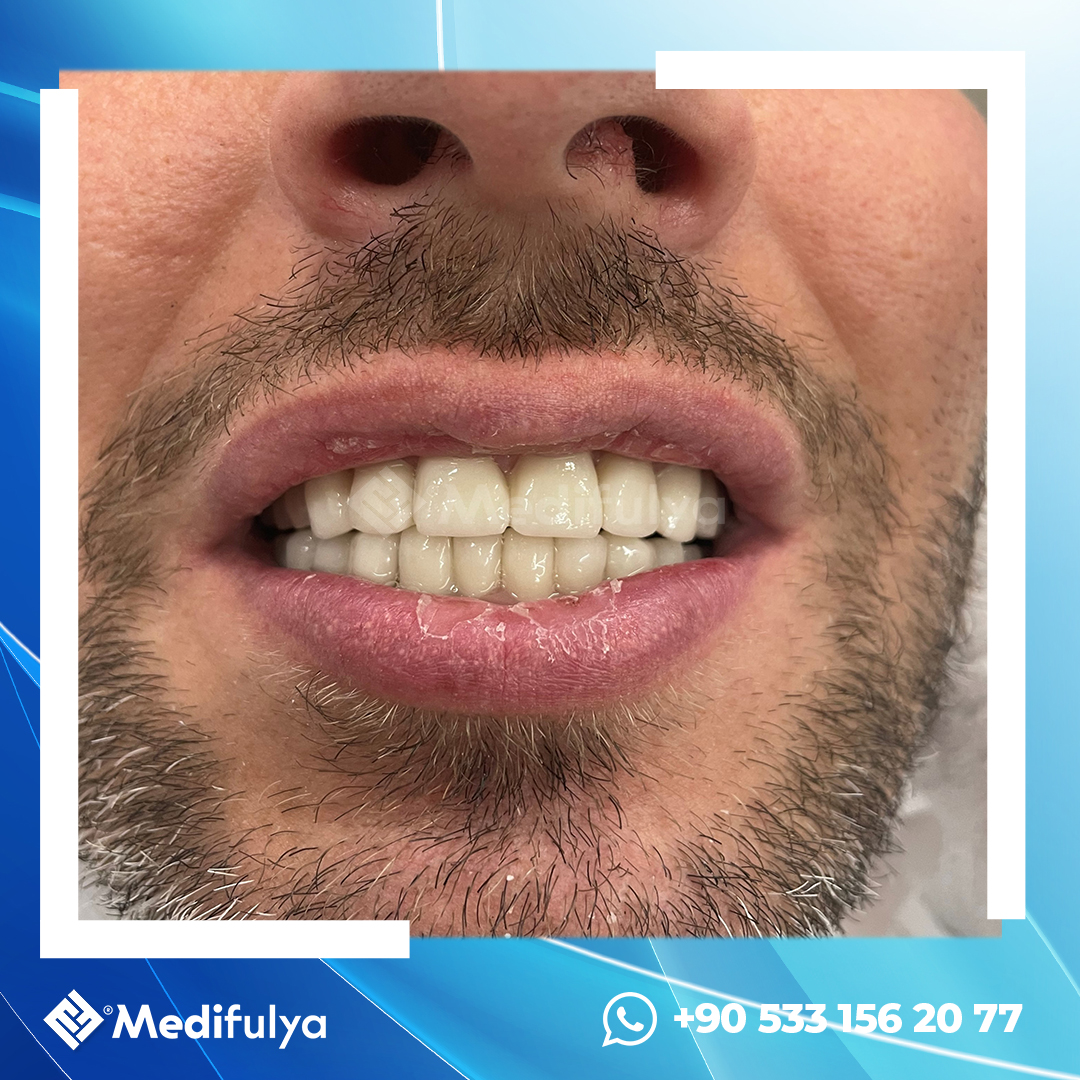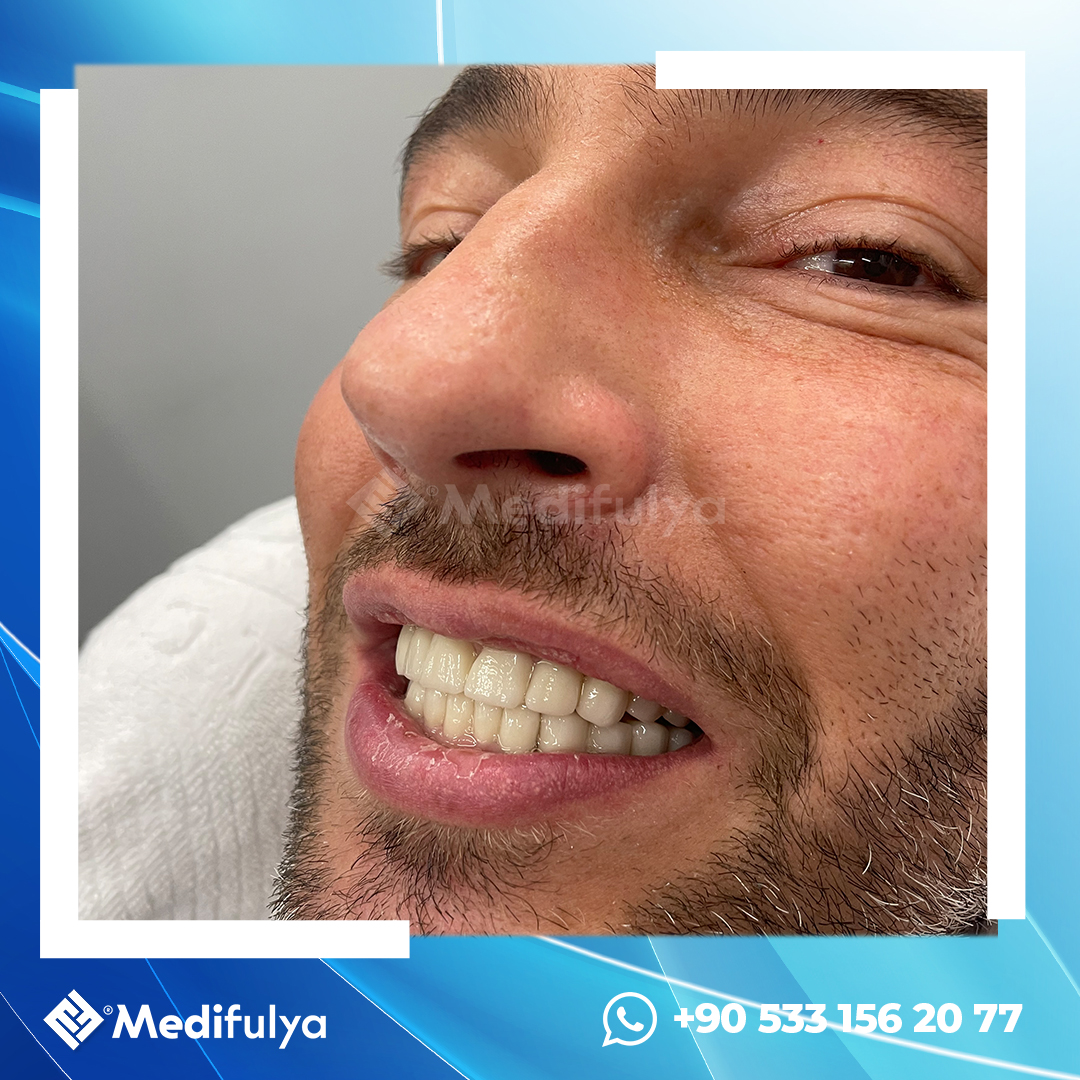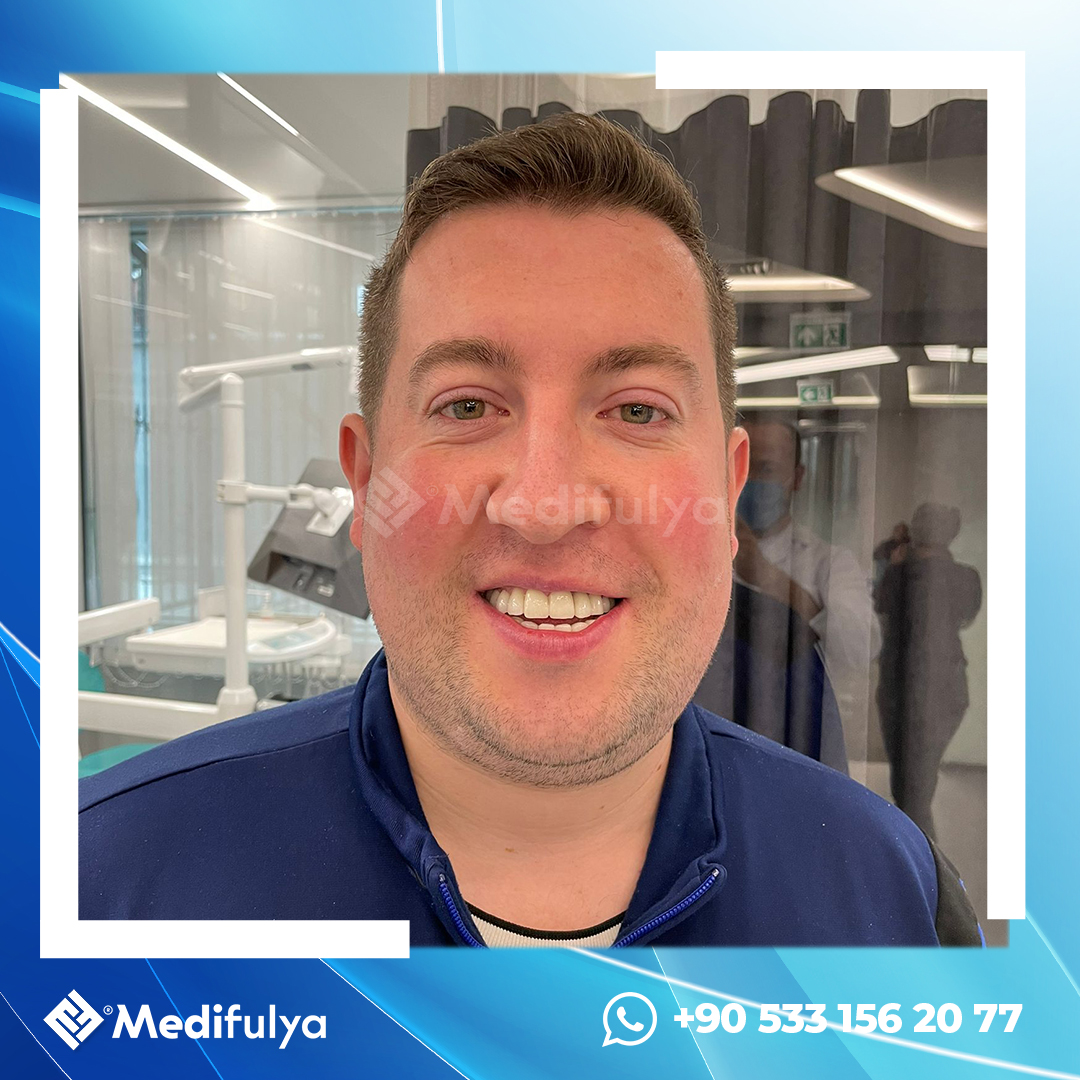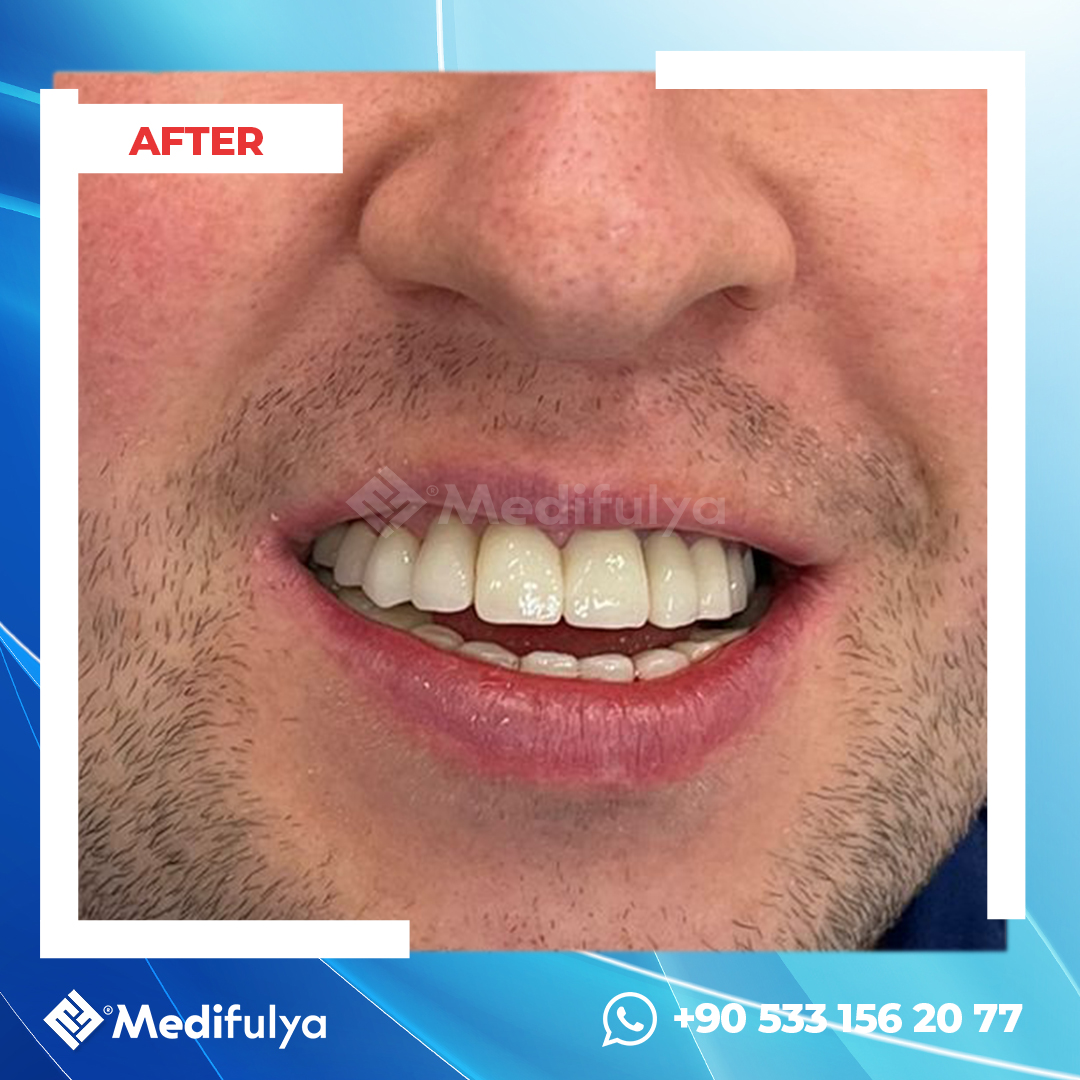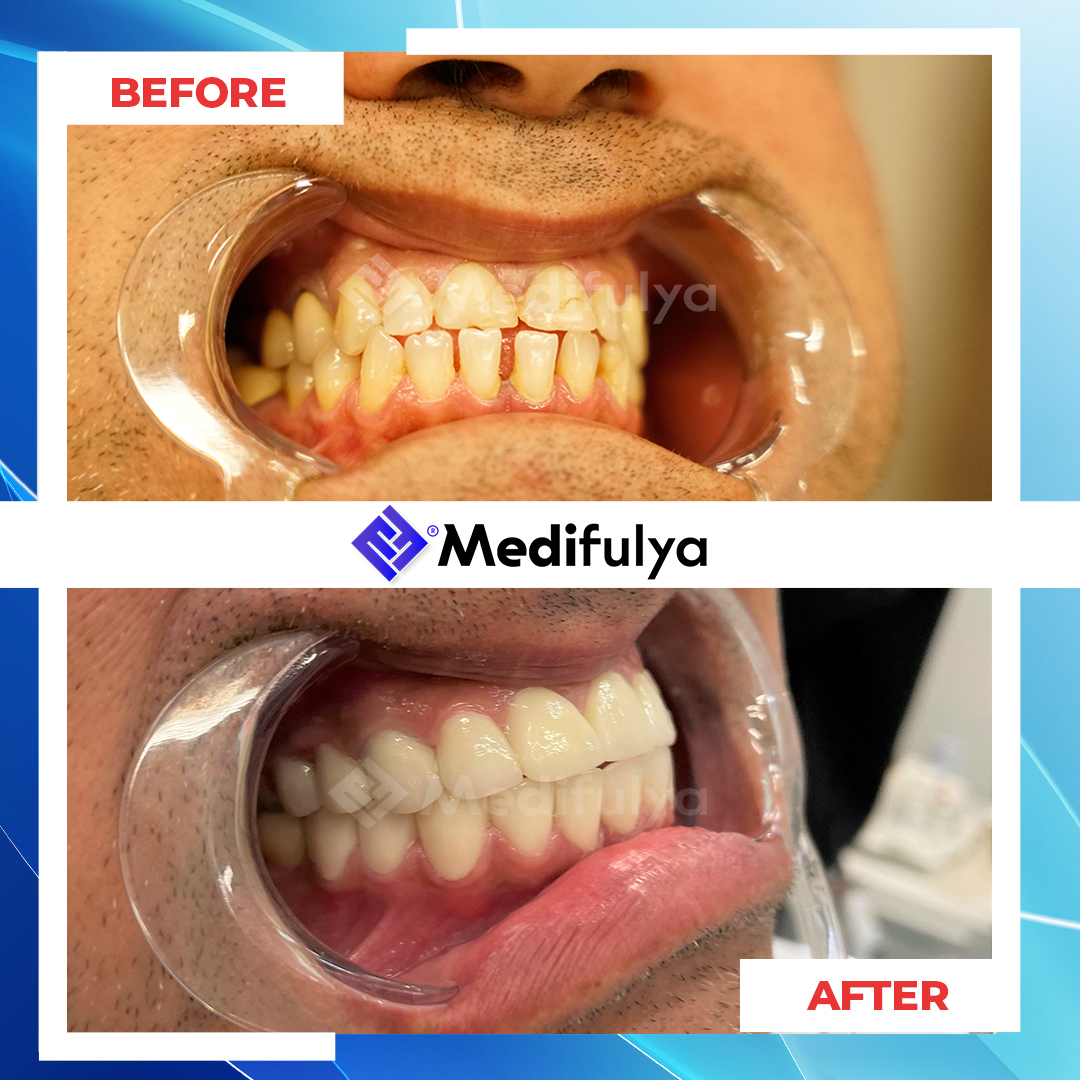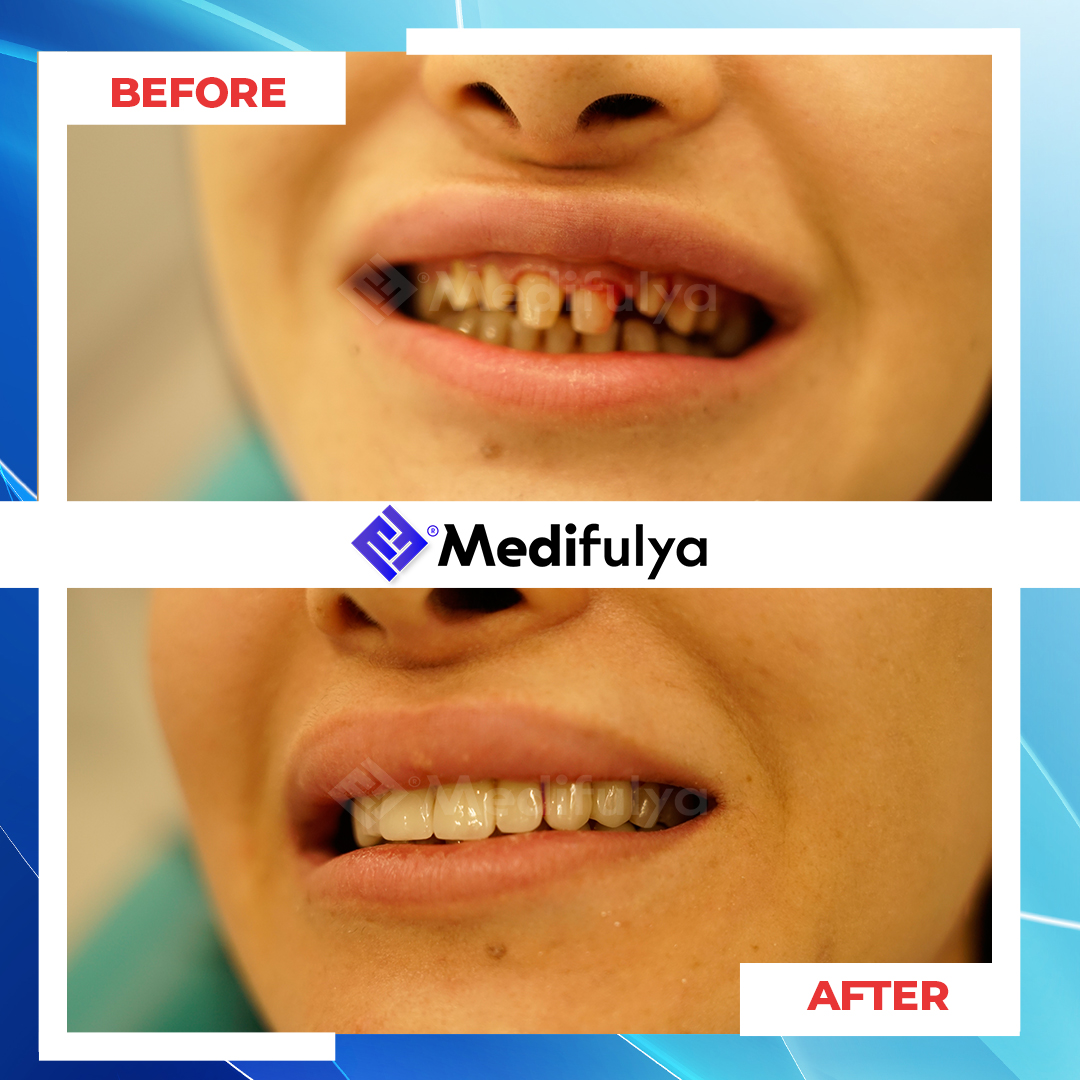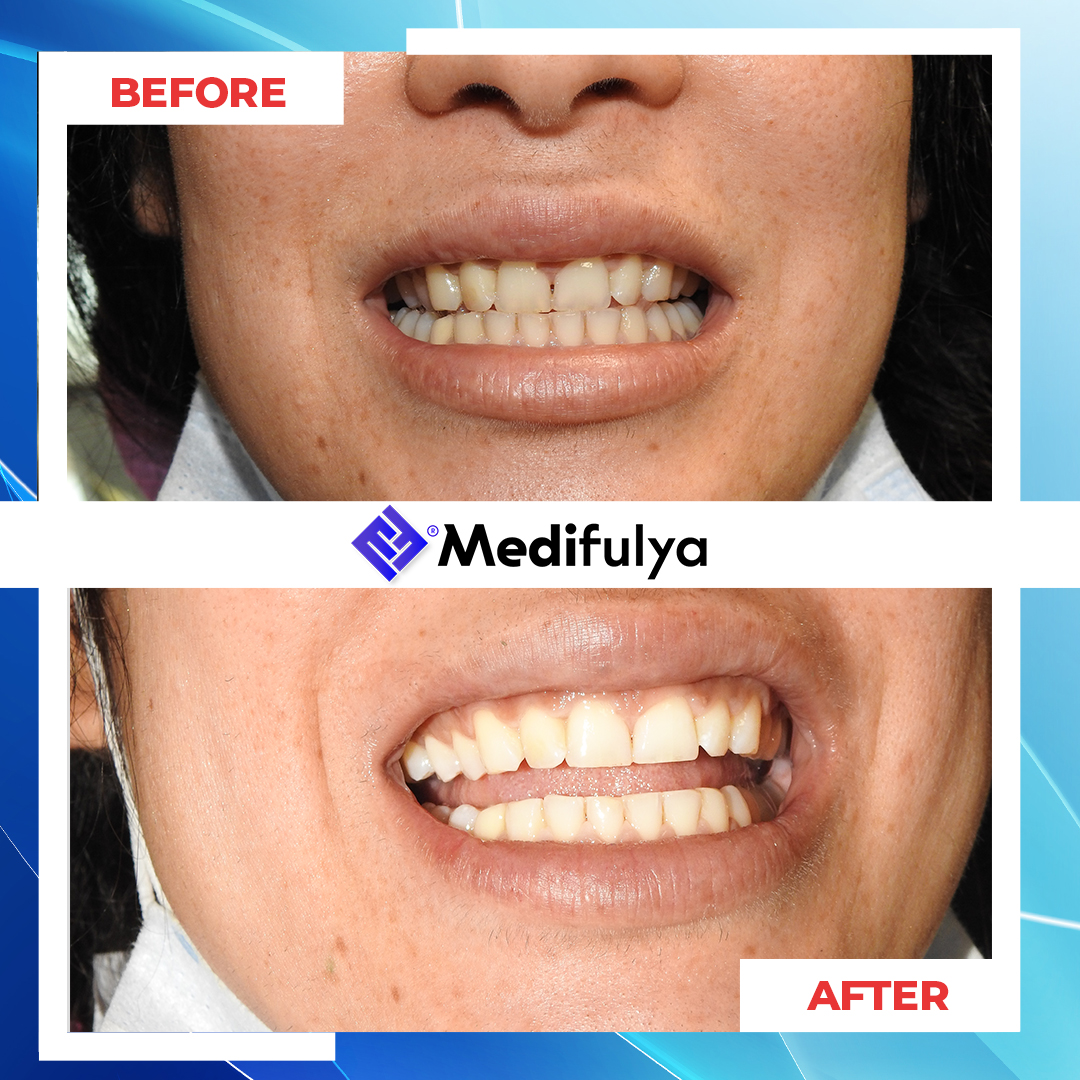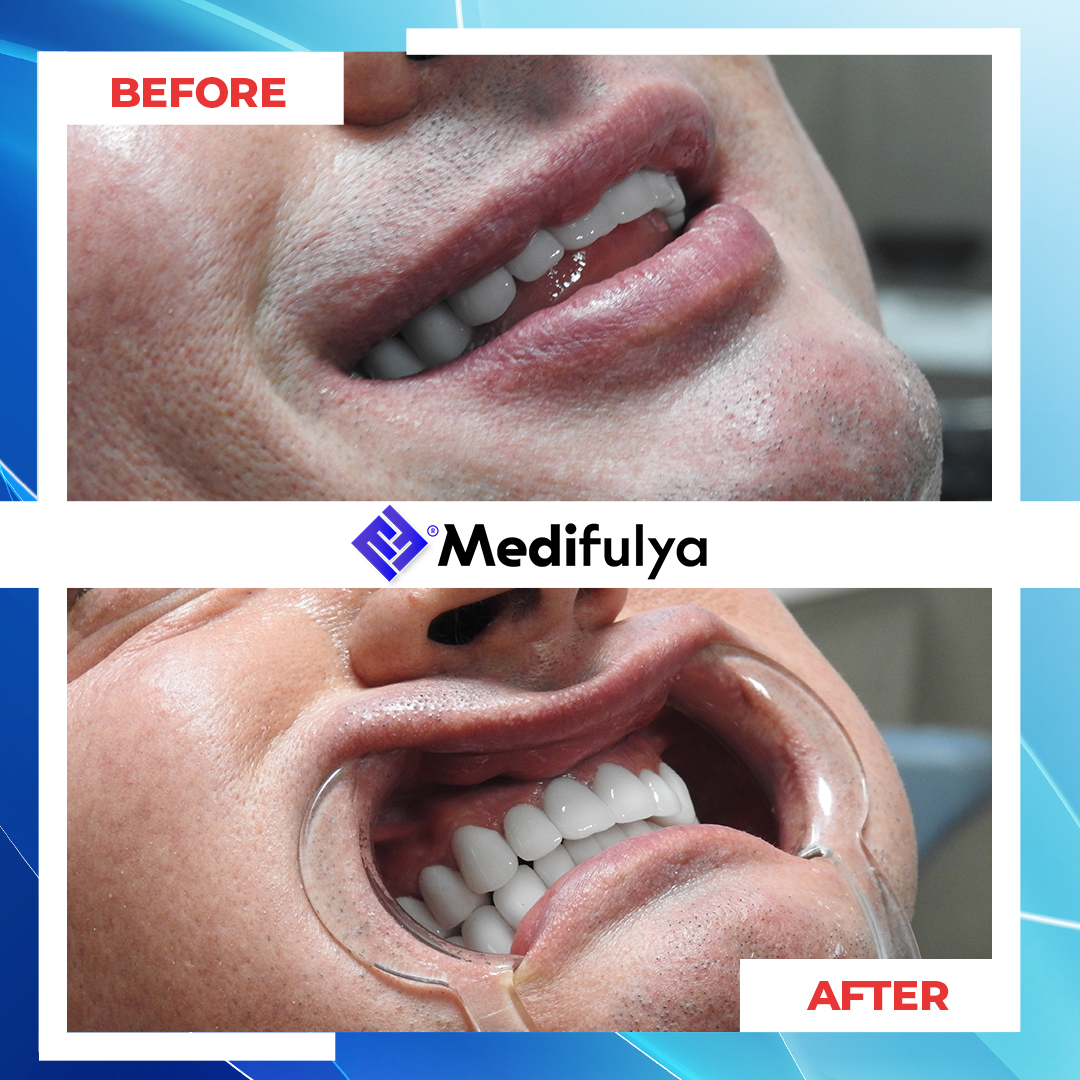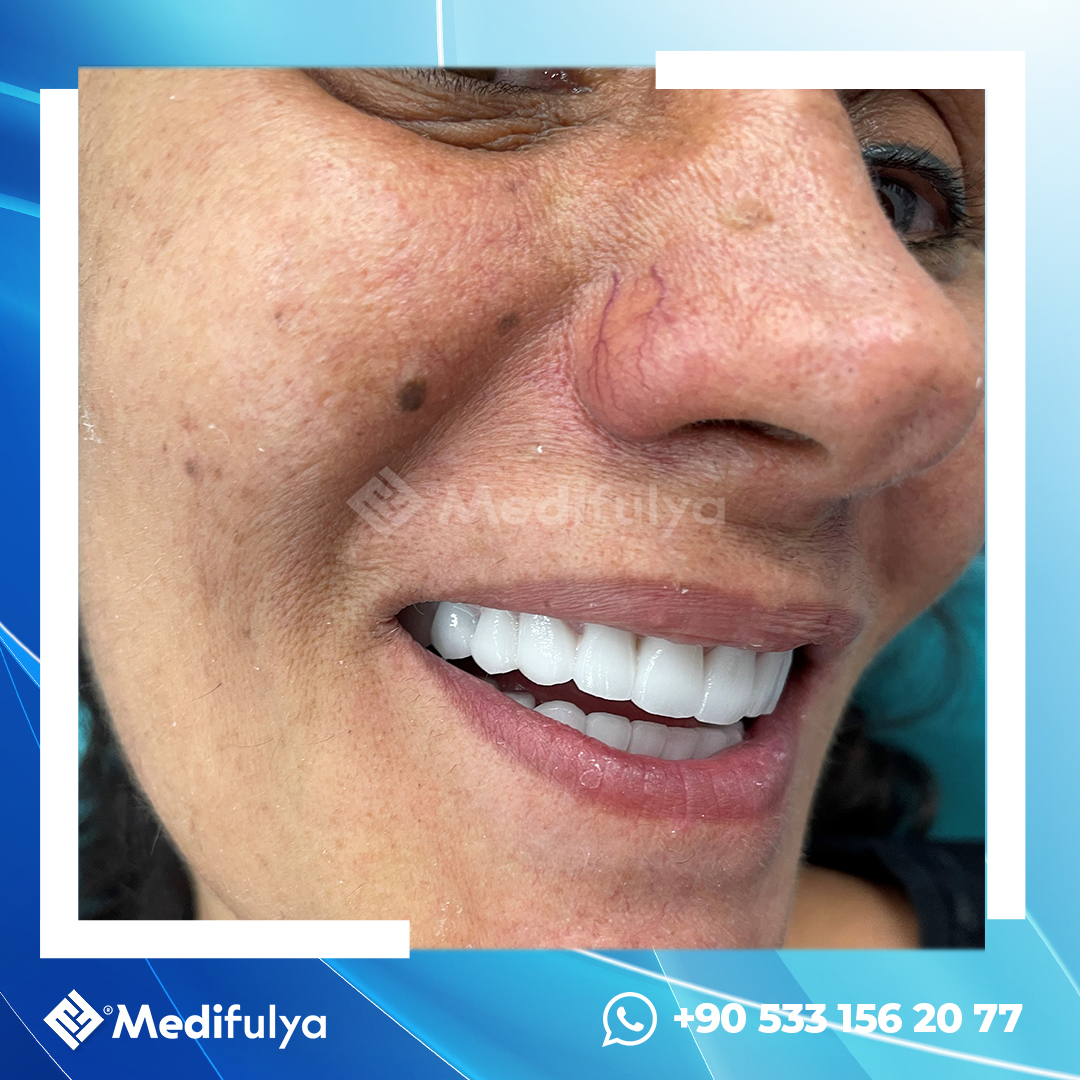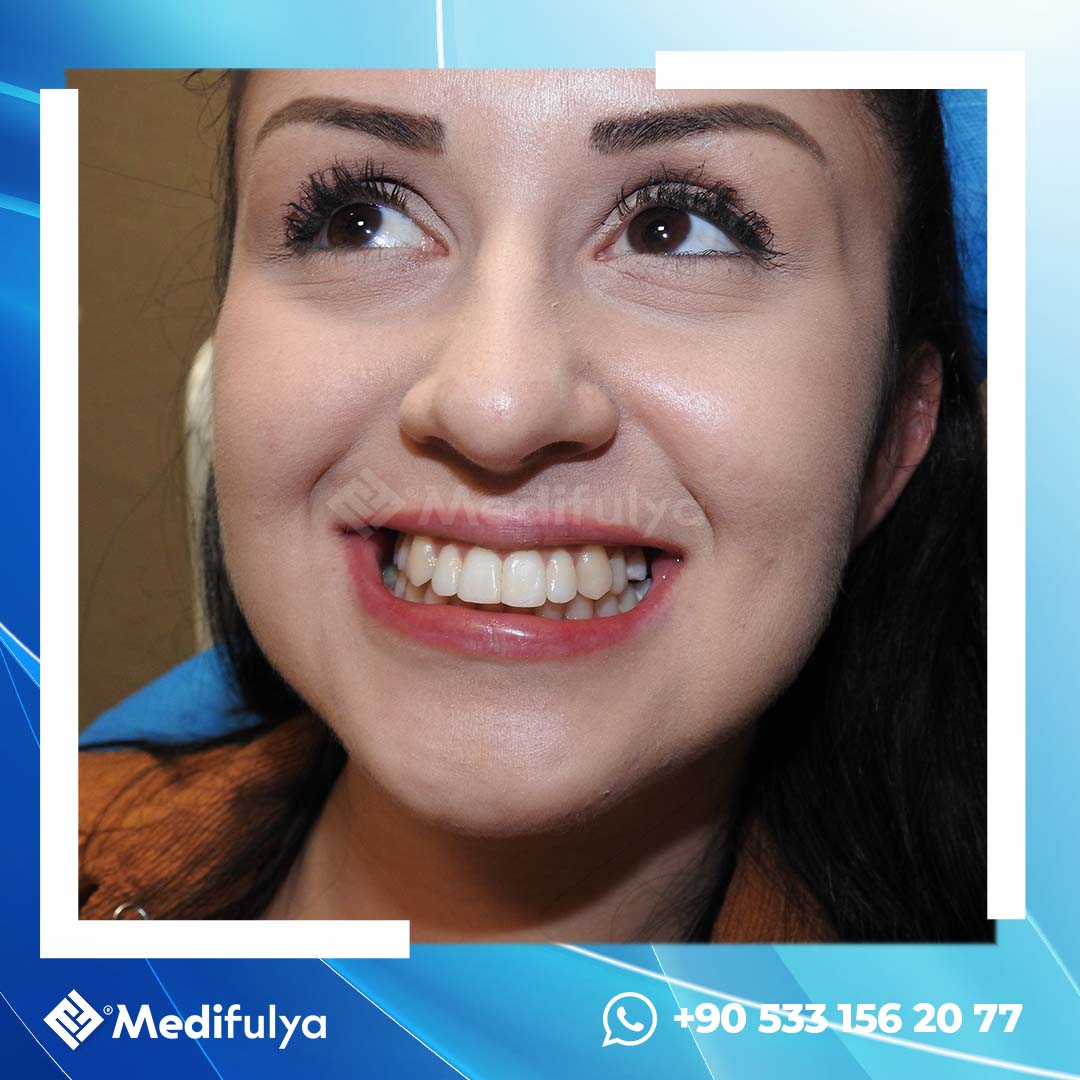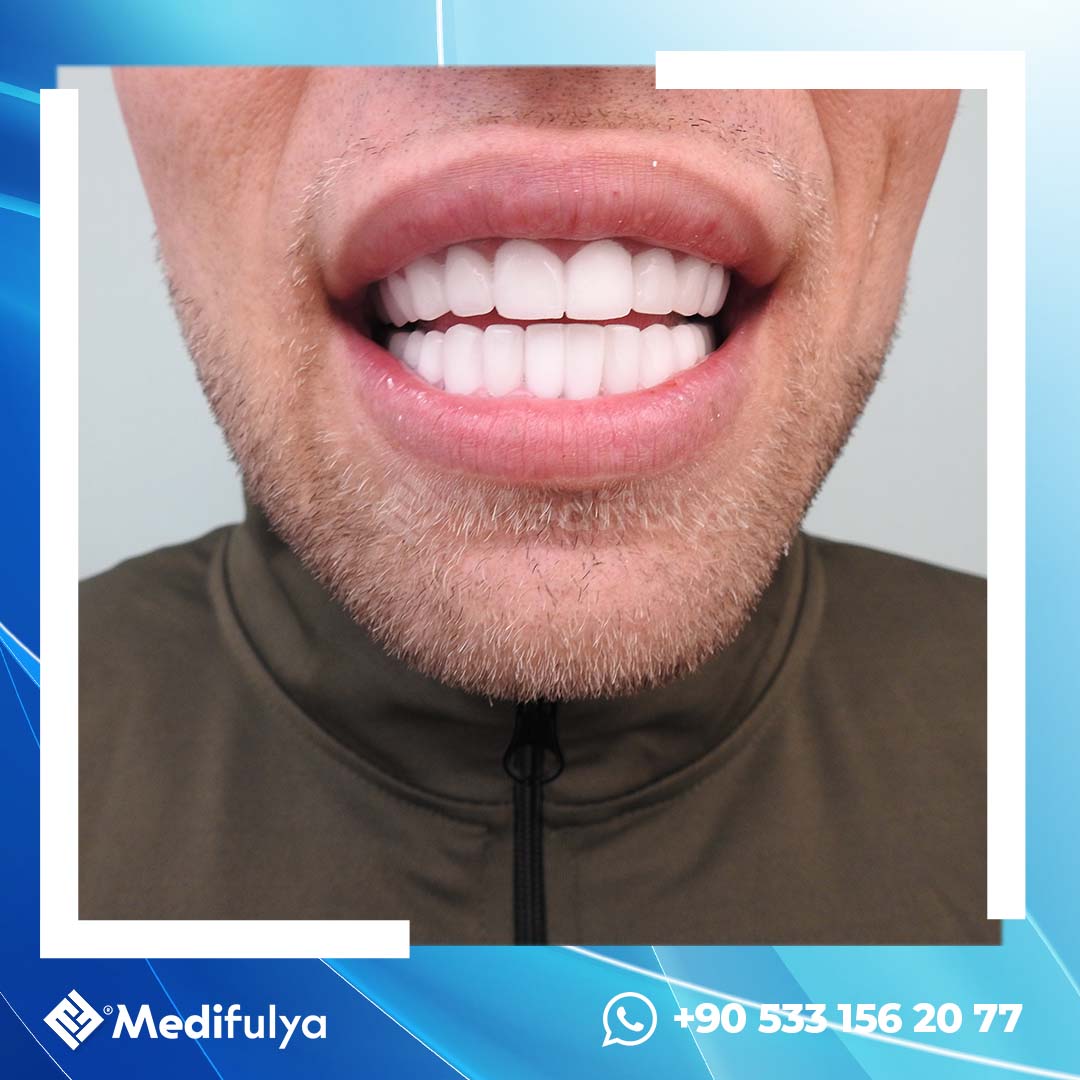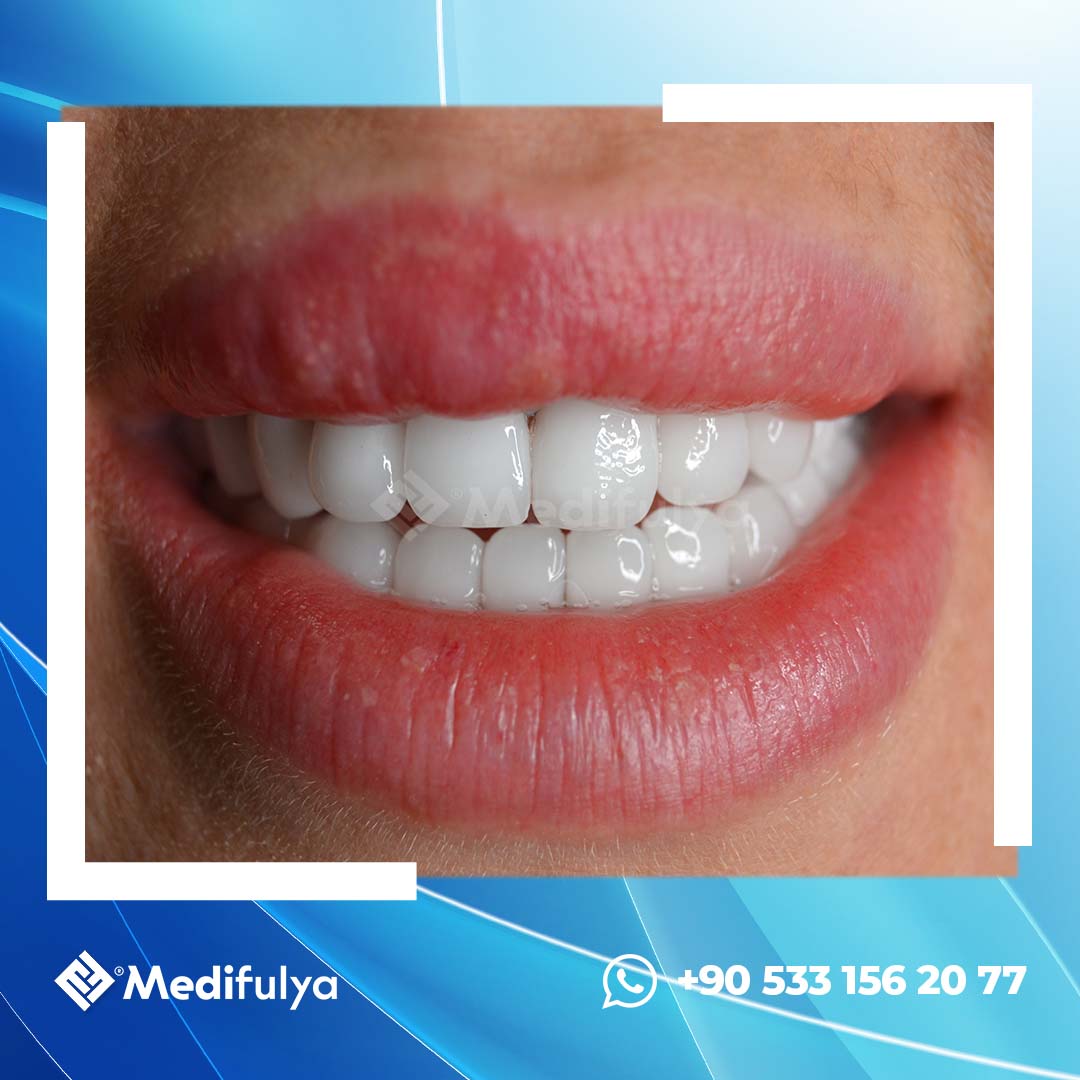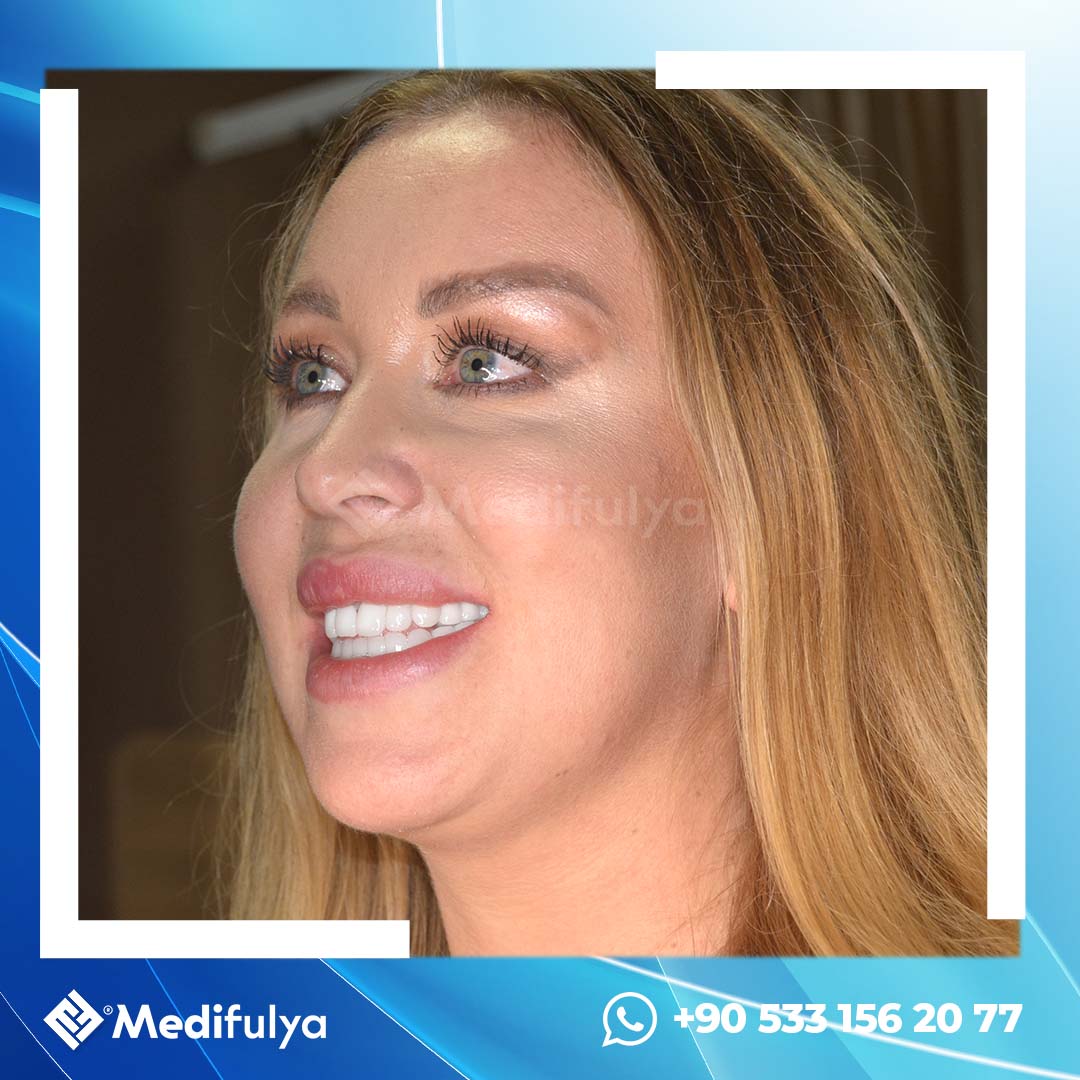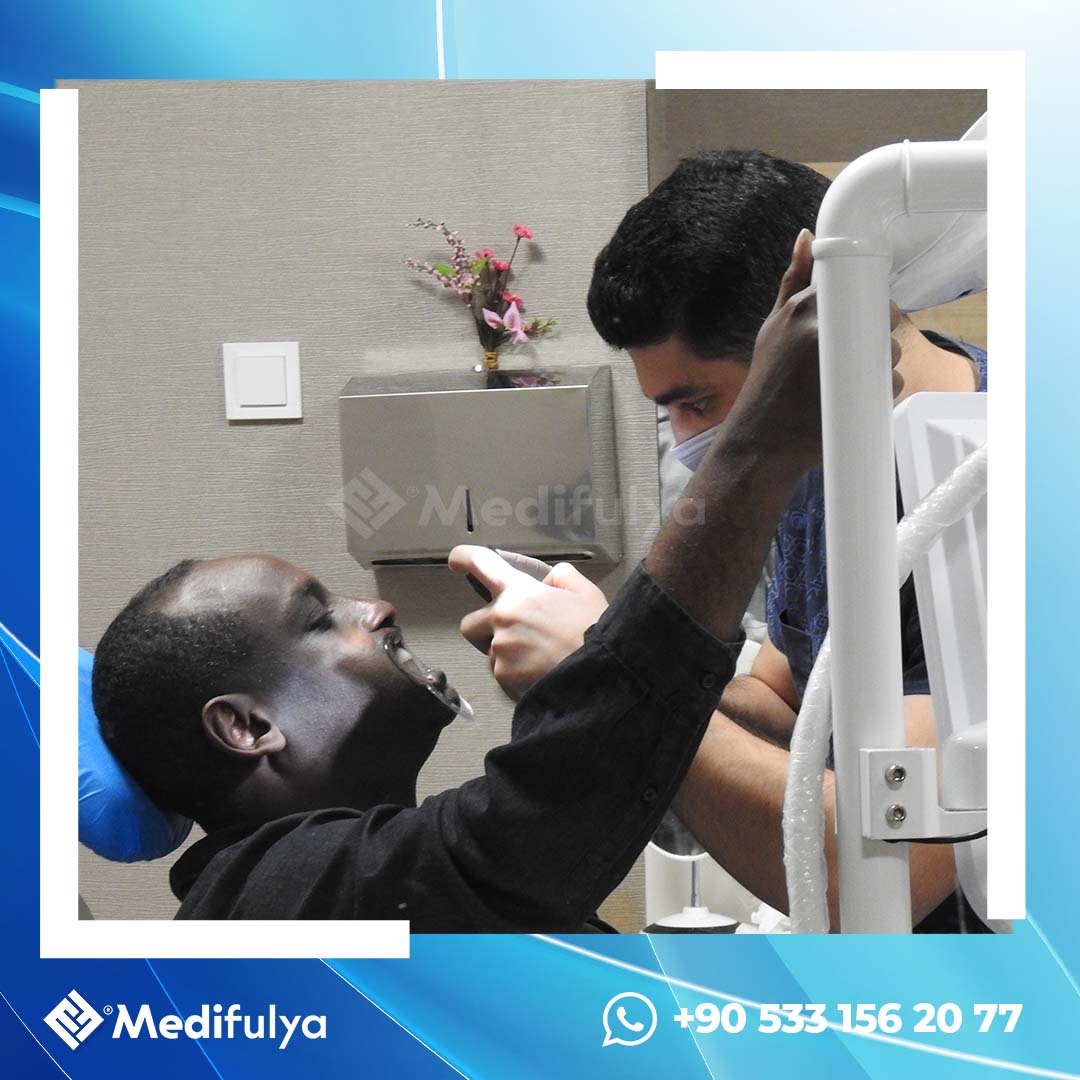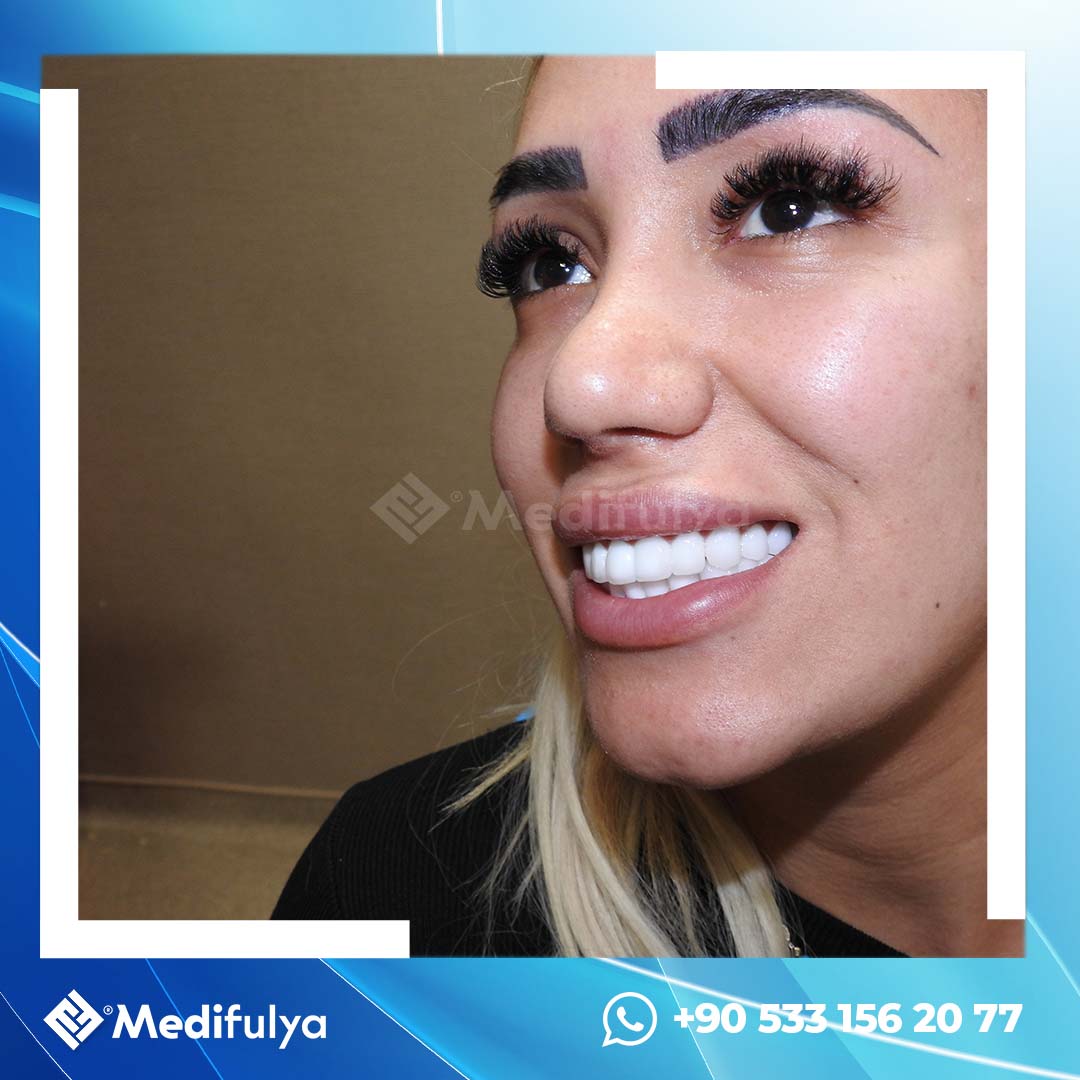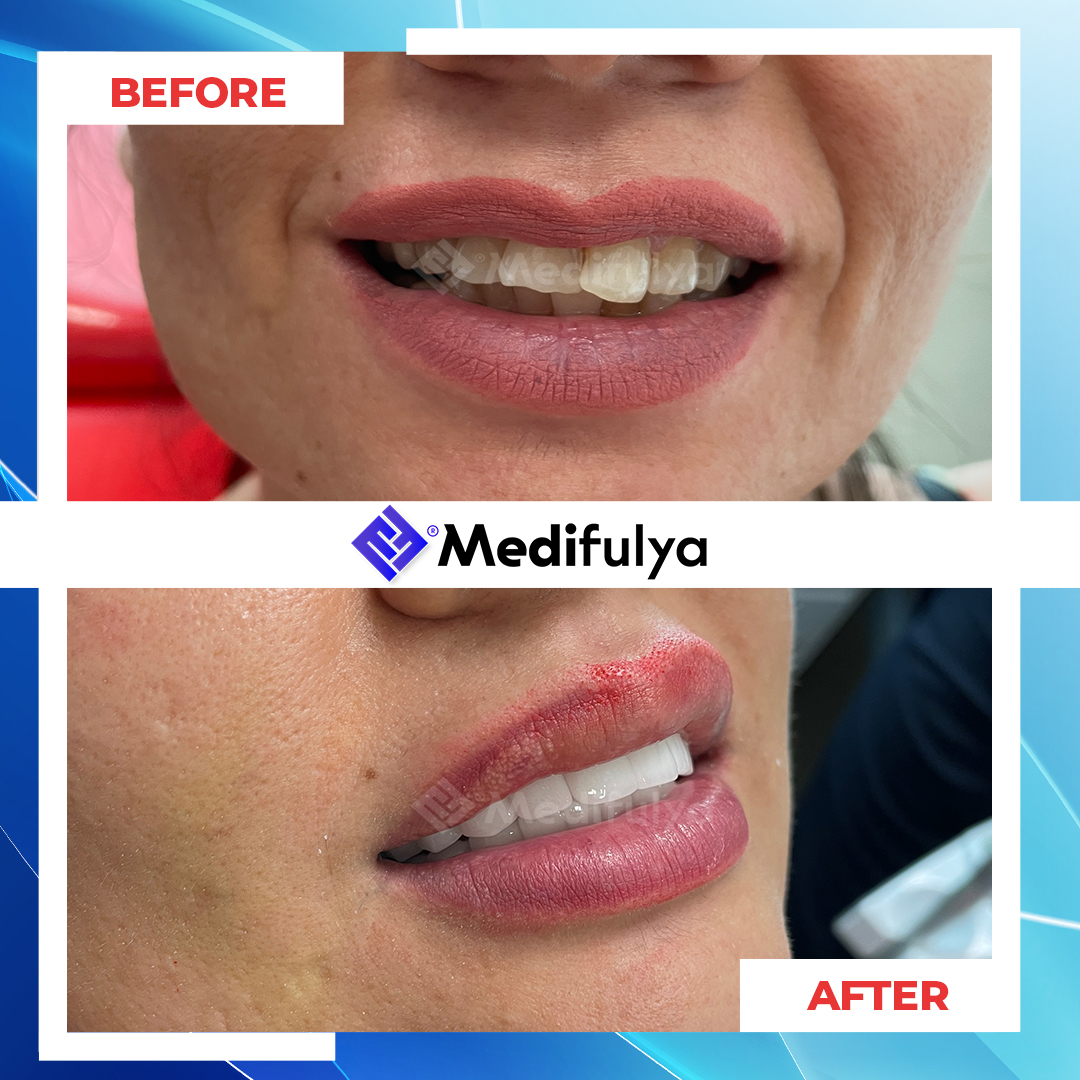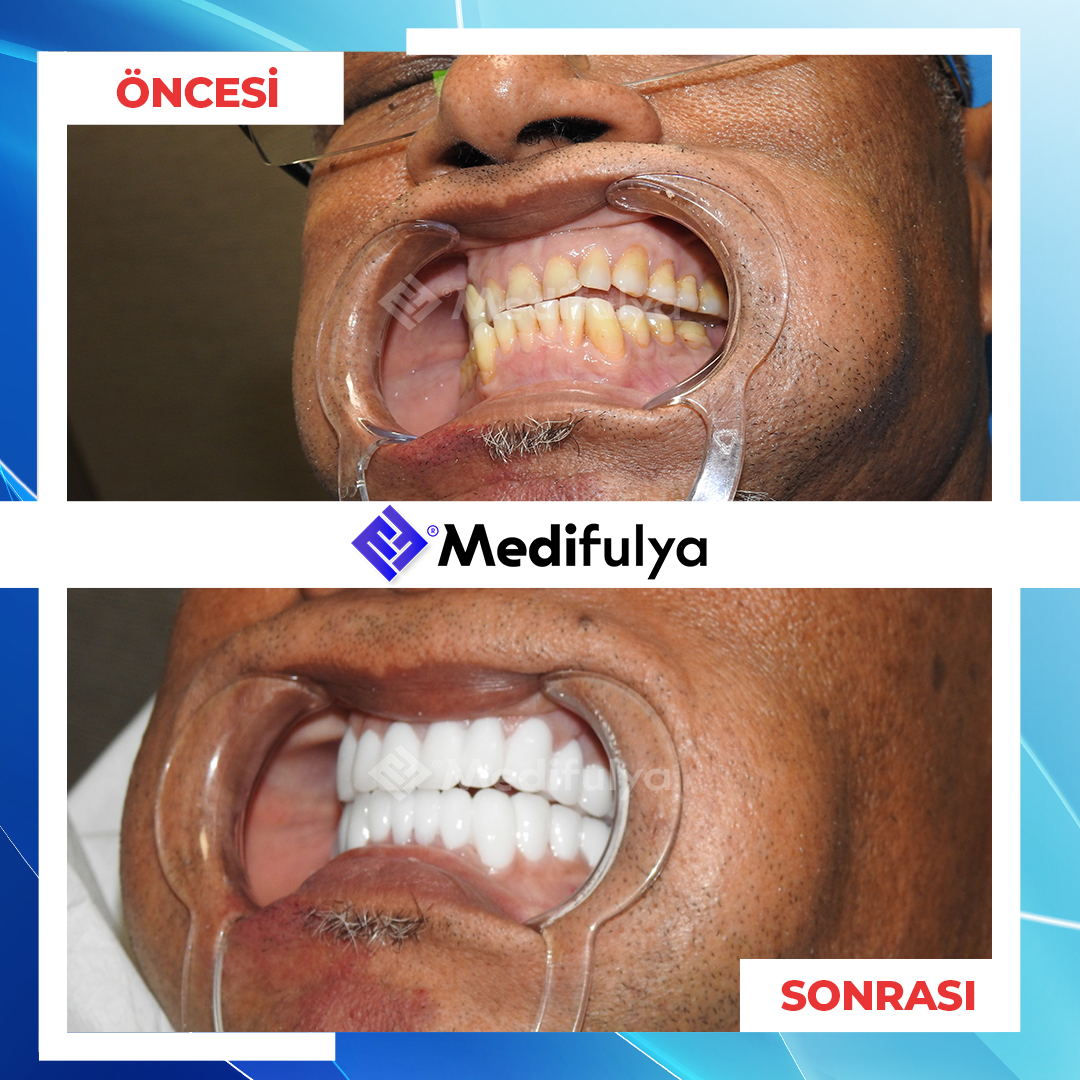What is Gum Diseases?
Gum problems can lead to tooth loss if left untreated. Symptoms such as bleeding in the gums, swelling, redness, pain, tenderness, retraction, shaking of the teeth and the presence of odor in the mouth indicate gum disease. A common mistake is to stop brushing because the gums bleed. In this case, the complaints continue to increase. In such a case, the best thing to do is to consult your dentist without wasting time. If treatment is not started, the inflammation in the gums spreads to the jawbone and causes osteoporosis. If the bone surrounding the tooth root starts to melt, the tooth starts to shake because it loses its support and tooth loss is seen. Having your routine check-ups at 6-month intervals ensures that the disease is noticed before it progresses.
With early intervention, you can use your own teeth with health for a lifetime.
Gum Diseases and Treatment
How to Have a Healthy Gum?
- Orange peel appearance, light pink color,
- A regular gingival border that surrounds the teeth at the root beginnings and follows their contours,
- Absence of redness, swelling or infection
- Not bleeding with normal brushing and thread use,
- Absence of any discomfort,
- Robust and hard-looking gums,
How Does Inflamed Gum Occur?
- Bleeding in the gums spontaneously or while using a brush or dental floss,
- Redness, swelling and an irregular appearance in the gums,
- Mild pain when pressed on the gums, inflammation leaking from the gums and/or sensitivity in the tooth in that area,
- Recession in the gums and sensitivity on the exposed root surfaces,
- Black areas on the gingival margins due to tartar,
- Swaying, elongation and opening between the teeth,
- A feeling of change in your closing when you close your mouth,
- Odor and bad taste in the mouth due to inflammation,
- Itching sensation (on the gums)
What Causes Gum Disease?
The main cause of gum disease is a sticky-transparent layer that is firmly attached to the tooth, called bacterial plaque. You can notice plaque by scraping your teeth with your fingernail. One milligram of plaque contains between 200 and 500 million bacteria. In addition, the following factors also affect your gum health.
Cigarette
As we all know, smoking causes many important diseases such as cancer, lung and heart diseases. Apart from all these, it is also very harmful for the oral mucosa and gums. It causes softening of the gums and the development of gum diseases.
Genetic Factors
According to studies, there is a 30% genetic predisposition. In addition, with poor oral care, the probability of developing gum disease increases 6 times. If there is a person in the family with a gum problem, you should definitely be examined by a gum specialist.
Hormonal Changes
You should pay special attention to your oral hygiene during periods of intense hormonal changes such as pregnancy, puberty, menopause, menstruation. Your gums will be more sensitive during these periods. The susceptibility to gum disease increases.
Stress
In addition to being one of the causes of many diseases such as hypertension and cancer, it is also a risk factor for gum diseases. Studies have shown that stress, including periodontal diseases, makes it harder for the body to fight infection.
Drug Use
Birth control pills, anti-depressants, heart medications affect your oral health. Therefore, if you are using one of these drugs, please warn your dentist and pay special attention to your oral hygiene.
Clenching or Grinding Teeth
They cause periodontal tissue destruction by causing a decrease in the force between the tooth and gingiva. One of the reasons for receding gums is clenching teeth. This squeezing must be stopped by attaching a night plate.
Diabetes
Diabetes patients are at high risk for periodontal (gum) infection. They should definitely pay attention to their oral hygiene by having their routine gingival controls done by a gingival specialist (periodontologist).
Malnutrition
It causes the body's immune system to weaken and accordingly, it makes it harder to fight infections, including gum infection.
Poorly Made Crown Bridges And Fillings
Fillings, crowns and bridges that press on the gums and overflow cause problems in the gums.
Types of Gum Diseases
Gingivitis
It is the simplest form of gum disease. It causes the gums to become red and swollen. Gums bleed quickly. Usually, at this stage, the patient does not feel much discomfort. Gum health can be restored with professional treatment and good care. If your oral care habits are insufficient, gingivitis starts to progress towards periodontitis.
Aggressive Periodontitis
With this type, at first glance it seems like there is no problem. On the contrary, the disease progresses aggressively and destructively. The gingiva may not respond to treatment and may need to be supported with antimicrobial (antibiotic) treatment.
Chronic Periodontitis
As a result of inflammation in the supporting tissues of the tooth, there is progressive attachment (tissue between the tooth and gingiva) and bone loss. It is characterized by pockets and recession in the gums. It is the most common type of periodontitis. Although it is more common in adults, it can occur at any age. Attachment loss is usually slow, but periods of rapid advance may also occur.
How is the treatment?
In the treatment of gingival disease, it is necessary to measure the depth of the pockets formed between the tooth and the gingiva with a special instrument. Diagnosis is made and treatment is planned according to the amount and depth of these pockets. Since deep pockets will prepare a suitable environment for the rapid progression of gingival disease, the aim of the treatment is to make them as shallow as possible. Because it is impossible for you to completely clean the microorganisms that settle in the deep pockets by brushing and using dental floss.
More Frequent Teeth Cleaning
While routine cleaning and controls are done every 6 months, cleaning is done at shorter intervals to be determined by the physician in people with periodontal disease or who are inclined to it. Microorganisms in the plaque that settles in the pockets multiply enough to damage the bone within 3 months. Frequent tartar cleaning prevents this accumulation and ensures that the bone is not damaged.
In this respect, it is of great importance to apply the hygiene training to be given by your physician or hygienist correctly and completely.
Root Surface Flattening (Curettage)
Flattening the root surface, popularly known as curettage, is the process of scraping the attachments attached to the root surface with the help of special curettes, removing them from the surface and exposing the healthy root surface and ensuring that the gingiva adheres to the root surface again.
Gingivectomy And Gingivoplasty
In some cases, gingival enlargement is observed due to inflammation, drug or hereditary. If these gingival enlargements are not accompanied by bone resorption or if there are no defects at a depth that requires us to form bone, we can remove the gingival enlargements by cutting the soft tissue wall of the pocket between the tooth and the gingiva. This procedure is called Gingivectomy. After this procedure, Gingivoplasty is usually applied to restore the normal physiognomy by correcting the gingiva with surgical methods.
Flap Operation
If periodontal pockets cannot be shallowed by curettage and root surface straightening, the gingiva forming the pocket is surgically removed. In very deep pockets, the gingiva is lifted as a whole and the necessary root surface straightening is performed, closed and fixed in place with sutures. If the melted bone needs to be supported at this stage, or if it is thought that bone can be formed in that area, hard tissue grafts or bone fragments obtained from the patient's own tissue are placed in the defect area, and the lost tissue is tried to be regained.
Crown Lengthening Operation
It is a simple procedure to lengthen the parts of the teeth (visible parts of the mouth) above the gingival level. In some cases, caries or fractures progress below the level of the gingiva, or the length of the teeth is very short. In such cases, it is necessary to extend the gingival level towards the root for the retention and gingival health of the prosthetic (crown, bridge, etc.) treatments.
Soft Tissue Grafts
It is the process of covering the prominent gingival recessions that occur in one or more teeth due to incorrect use of the toothbrush, anatomical errors or gingival diseases, with a piece of soft tissue taken from a different part of the mouth (usually the palate). It is usually done for aesthetic purposes or, in some cases, for preventive purposes in order to prevent the progression of gingival disease.
Hard Tissue Grafts
During flap operations, bone formation is stimulated by artificial or natural sourced bone powder applications in areas where bone loss is advanced.
Gum Applications for Aesthetic Purposes
Even the most beautiful teeth do not look attractive if they are not framed by healthy and properly shaped gums. Non-aesthetic gums can be corrected with treatments and minor operations on your gums.
Unhealthy Gums
Gums appear red, swollen and shiny due to periodontal disease. They must be treated before aesthetic dentistry procedures.
Smile with Gums
(Gummy Smile) In cases where the gums appear excessive when they smile, a more pleasant smile can be obtained by removing the excess gums with a small operation, whether or not any aesthetic dentistry procedure will be performed.
Gingival Recession
As a result of gingival recession, some teeth may appear too long, and the root surfaces of these teeth are exposed. In such a case, first of all, gingival treatment should be performed and these openings should be closed with soft tissue grafts.
Irregular Gingival Margins
The gingival framing of the teeth may be too high or too low in some teeth (gingival recession, eruption disorder, defects arising from tooth loss, etc.).
Gingival Pigmentation
As a result of any injury or naturally, there may be different colored areas in the gums. If they are on the laughing line, they should be destroyed as well.












